Artistic
estates raise very serious questions. The University of
Düsseldorf asked me to teach a course on this topic in the summer
semester of 2026.
|
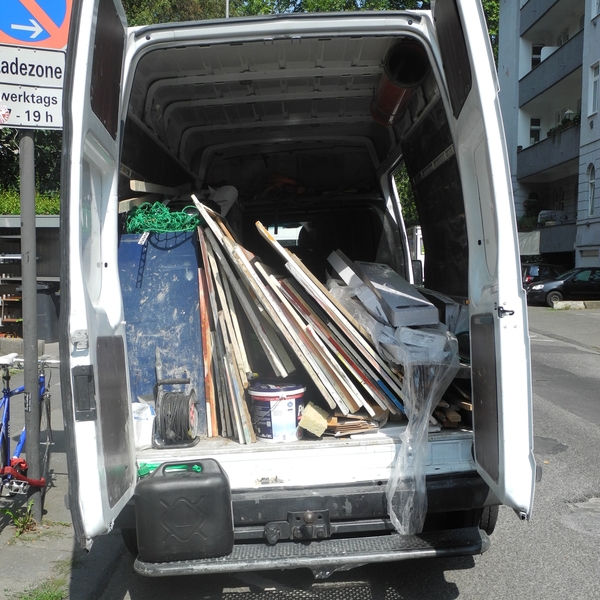
|
What
can an artist do when a long-planned travel mission is interrupted by
forces of nature or even called into question? Ivo Weber asked me to
write an essay reflecting on a decisive moment in his project “Der Esel
kommt mit” (The Donkey Comes Along).
|
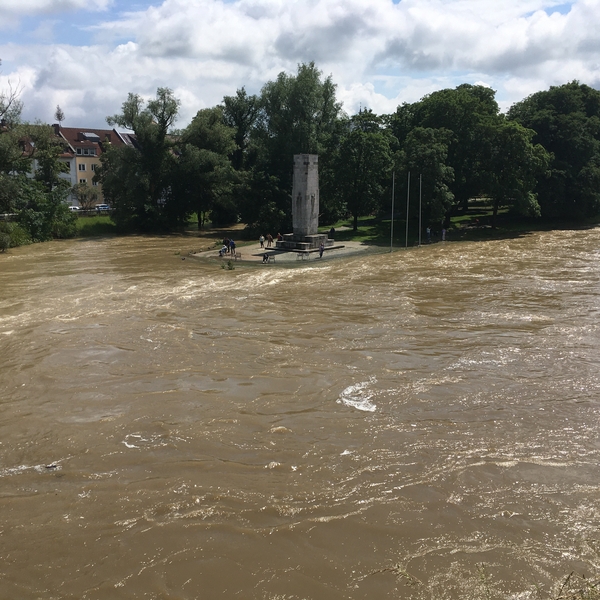
|
In 2026, I will once again be teaching a course for American students at the AiB
in Bonn. Experiences in this charming Rhineland city continue to form
the starting point for excursions into Europe, into artistic realms,
and into the possibilities they offer.
|
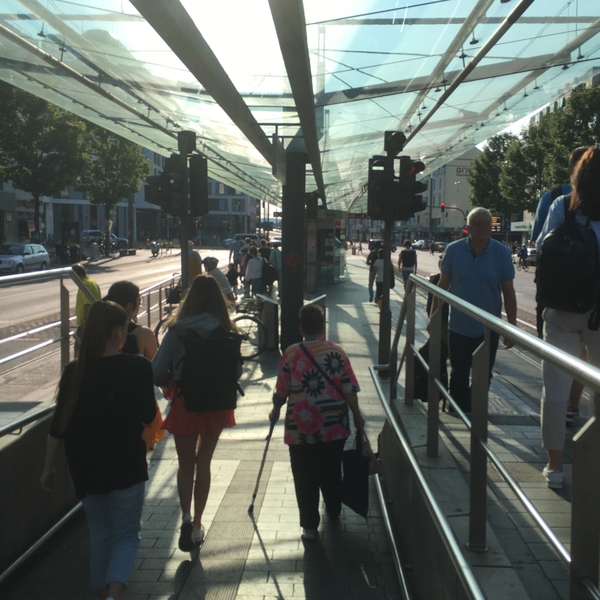
|
Takako Saito has passed away. I miss her very much, this exceptional artist and good friend.
|
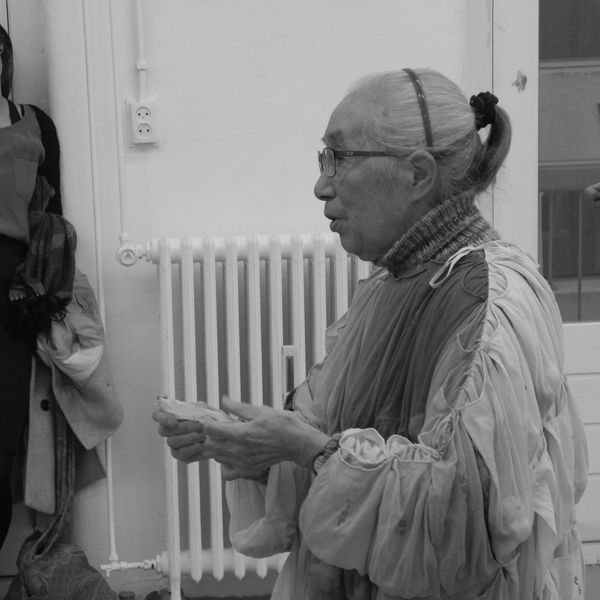
|
Ivo Weber has given his foray through Neu-Ulm a special setting: it is about the biography of Philipp S., who emigrated from there to Hungary around 200 years ago,
and about a small model boat that the artist entrusted to the Danube
during the foray. Will this message in a bottle make it all the way to
Pécs in Hungary?
|
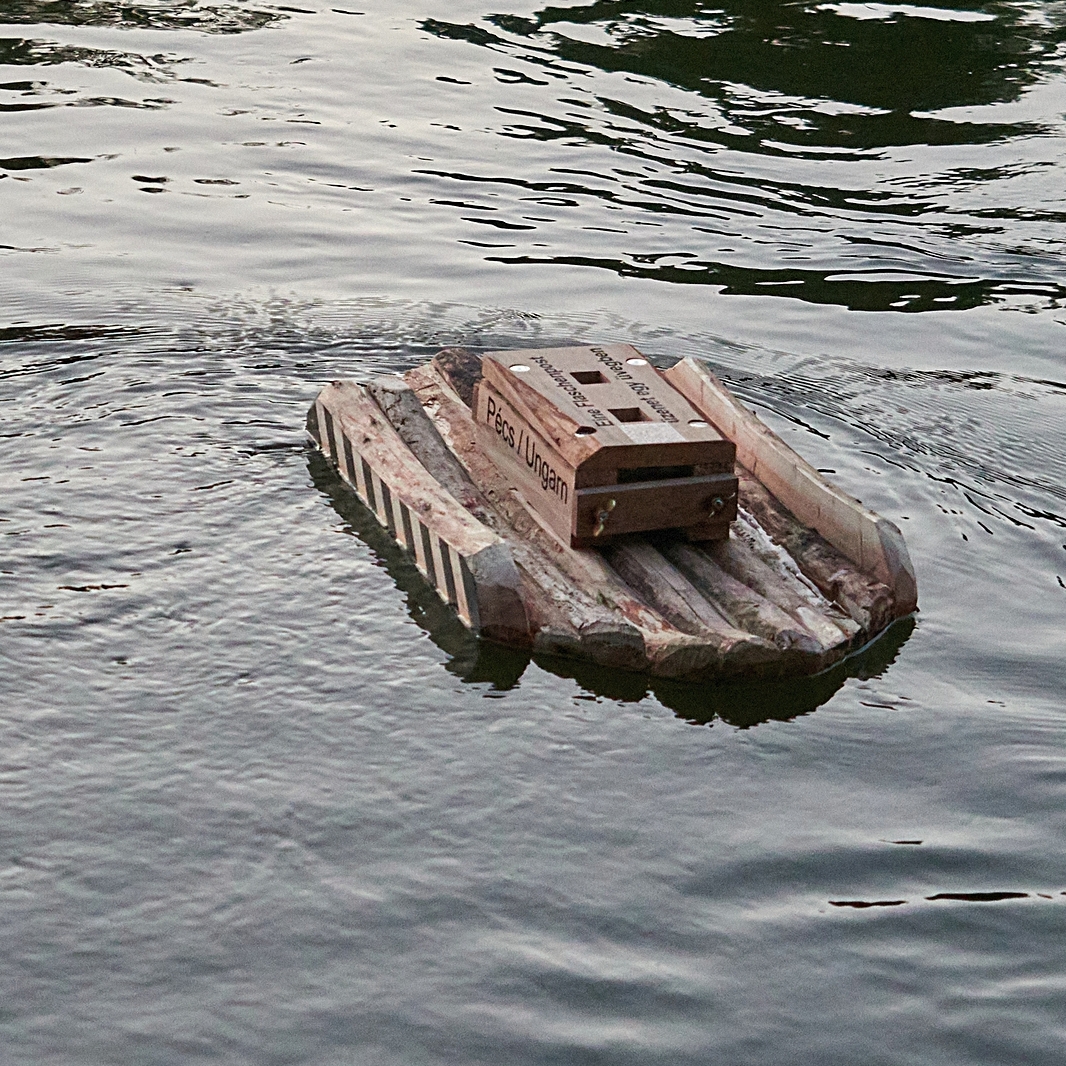
|
Once again this year, I have prepared and accompanied two artistic forays through Neu-Ulm.
I am delighted that they not only find an interested and curious
audience, but also that the artistic strategies of those invited are
constantly expanding. This year, for example, QR codes open up digital
paths to individual narratives. The physical experience of the urban
space remains intact, not only because you roam through the city
together, but also because the digital signals left behind in various
places - as in this case by Nieves de la Fuente - first need to be
tracked down.
|

|
One of the highlights of the 2025 course at the AiB in Bonn
was a visit to the former German Bundestag building, which is now part
of the World Conference Centre Bonn. Klaus Holetzki's
knowledgeable advice gave ideas to the students and me that we would
hardly have come up with on our own.
|
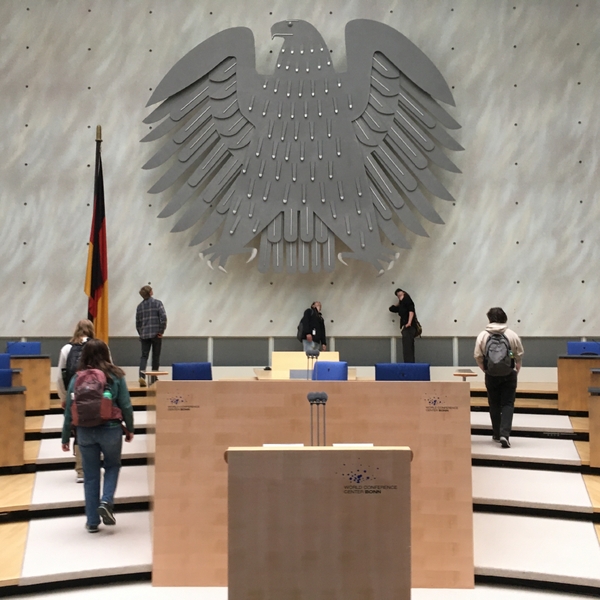
|
How does an idea become a work of art? With this question in mind, the seminar offered jointly with Denise Winter at the Arts Center of the Ruhr University in Bochum
has set itself the task of making 40 years of this institution the
subject of its own small exhibition. A niche in the foyer is now the
permanent home for the students' impressive results.
|
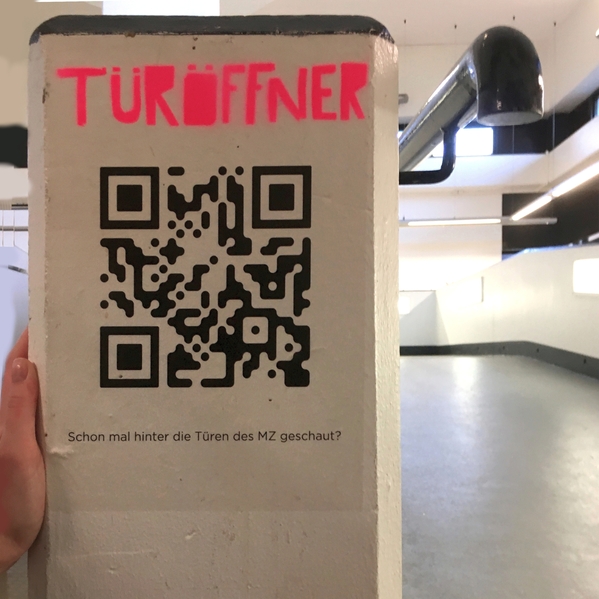
|
It's not usually my style to
focus on everyday occurrences. However, as a frequent user of the
railroad for professional reasons, I decided to focus on the delays and
the reasons given for them - even if the reasons behind them are
political blunders of the past decades. The formulaic introduction to
these announcements provided the starting point for my notes. (Sorry,
this might be demanding for people not common with the special German
spoken by railway announcements.)
|
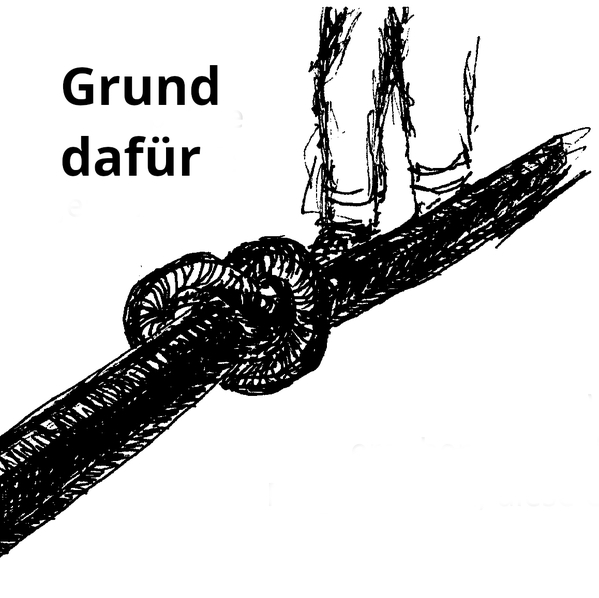
|
Takako
Saito has left her long-time studio in Düsseldorf in the
foreseeable future. Time to sift through, organize and archive the
extensive materials and archives from well over half a century of
artistic work. I will help her with this.
|
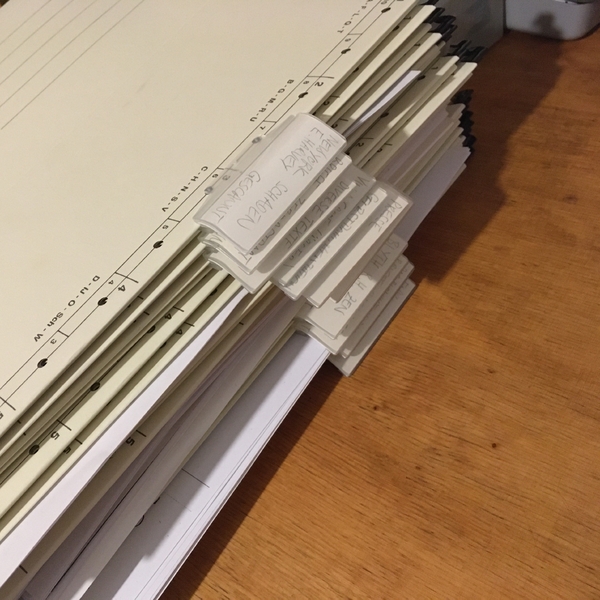
|
The
artistic forays through Neu-Ulm have been taking place for several
years now. Time and again, the aim is to explore the city on the Danube
to find out what is artistically remarkable there. And that is quite a
lot, as the 2024 forays with Wieland Krause and Nancy Jahns have once
again shown.
|
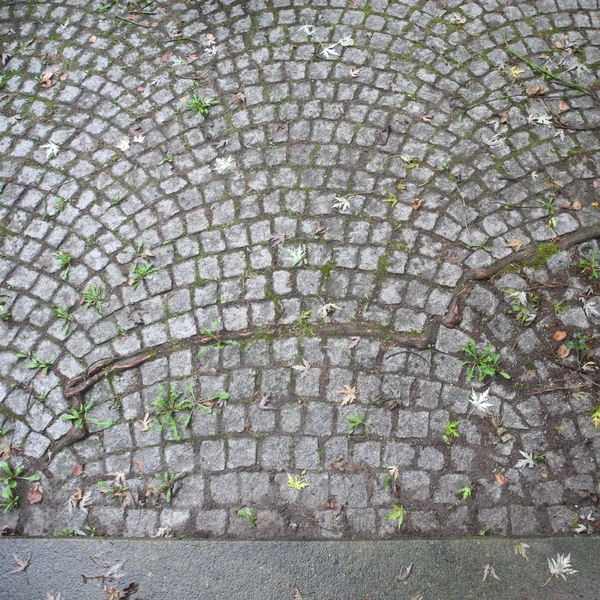
|
The
brilliant festival in honor of Ferdinand Franz Wallraf, which raged
through Cologne for 10 days in September 2024 under the name WASTA,
is now history again. Only a few murals will remain, the majority of
the artistic interventions in the urban space have already disappeared.
However, a documentation is pending.
|
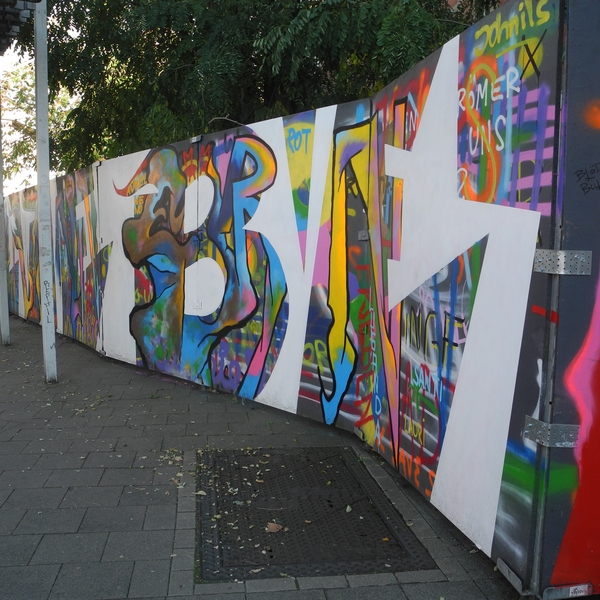
|
A new seminar will now be held at the Ruhr University's Center for the Arts together with Denise Winter:
How does an idea become a work of art? For more than forty years, this
institution has offered students the opportunity to develop and realize
their own artistic projects. Time to focus on the making and the made.
|

|
The
“Wandelgänge” project (Verein für Christliche Kunst in der
Kirchenprovinz Paderborn e.V.), which began in 2019, explored questions
between art and the church in individual walks. A documentation is now
available. A booklet designed by Torsten Illner and Tobias Jacob brings
to life changing references between images and spoken word; the
participating artists Norbert Radermacher, Dagmar Schmidt, Nancy Jahns
and Thomas Blase contribute their views on their respective walks
through Paderborn, Kassel, Magdeburg and Meiningen.
|
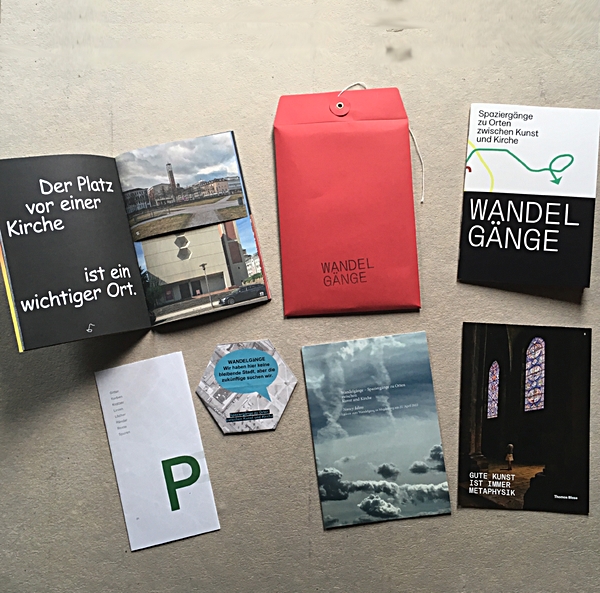
|
For
many years I have been photographing situations that have to do with
exhibiting or seeing in general. Now I've been asked to put together a
series of pictures for the magazine kultur politik, which is planning a
curatorial issue. Many photos are now to be viewed under this new
aspect ...
|
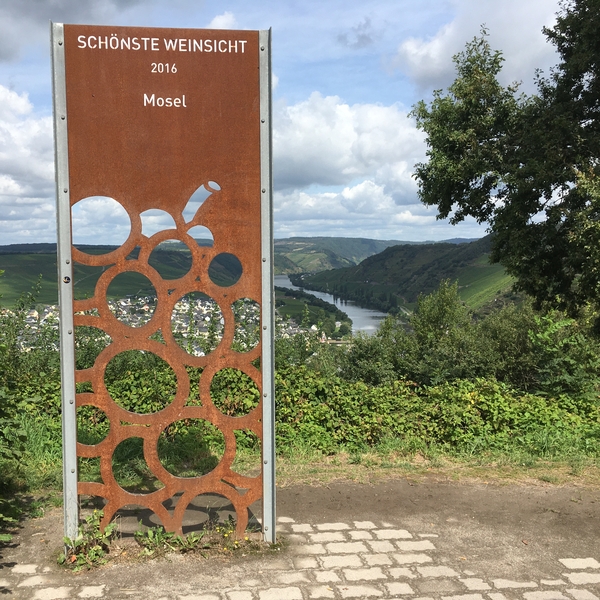
|
Cologne-based
artist Ivo Weber has invited me to take part in one of his amazing
projects. He set off on the long journey from Cologne to Cluj in
Romania with an electric vehicle for seniors and a donkey sculpture. As a herald, he delivers
messages collected there that revolve around art and its role in the
public sphere. For obvious reasons, I met him in Neu-Ulm and was
allowed to contribute to his travel blog.
|
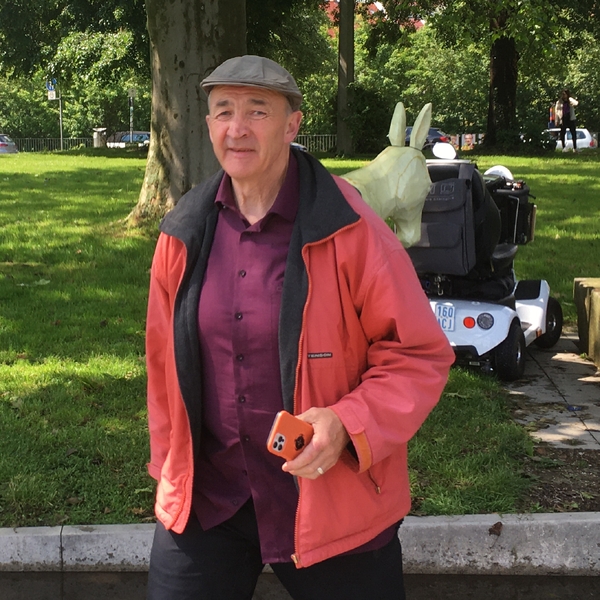
|
| There
are probably connections between the famous Cologne scholar and
collector Ferdinand Franz Wallraf (1748-1824) and today's street art.
But what do they look like? The WASTA project is investigating this. We'll know more in September 2024. |
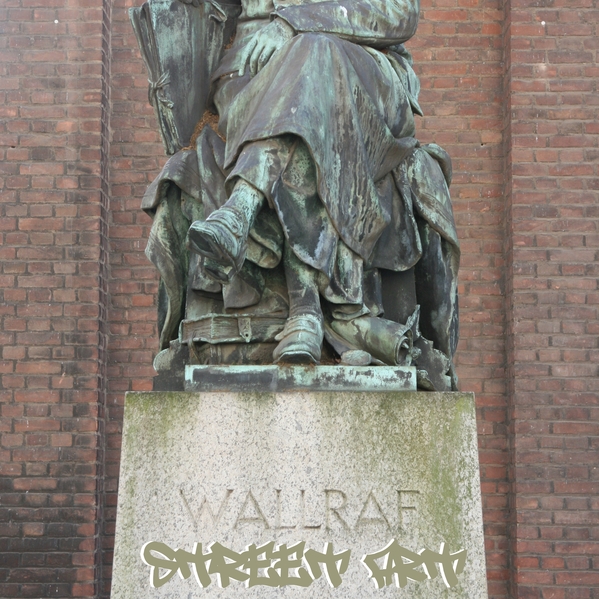
|
A new course for the AiB in Bonn
showed me that my American students who were also attending a course on
“Gambling on a Global Scale”. Reason enough for me to question the
topic artistically for the final assignment in my course - with results
that were as surprising as they were pleasing.
|
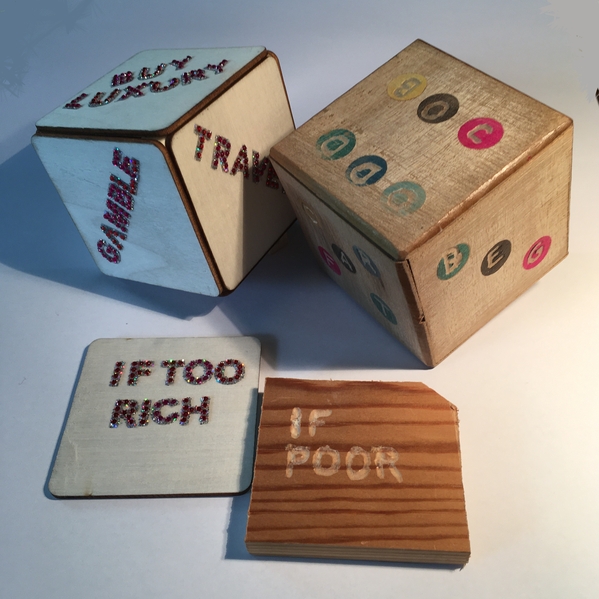
|
The
results of the seminar at the Ruhr University Bochum's Music and Arts
Center are as astonishing as they are pleasing: self-designed postcards
came up, a herbarium, prints and lyrical texts about the not at all
lyrical ambience of their university.
|
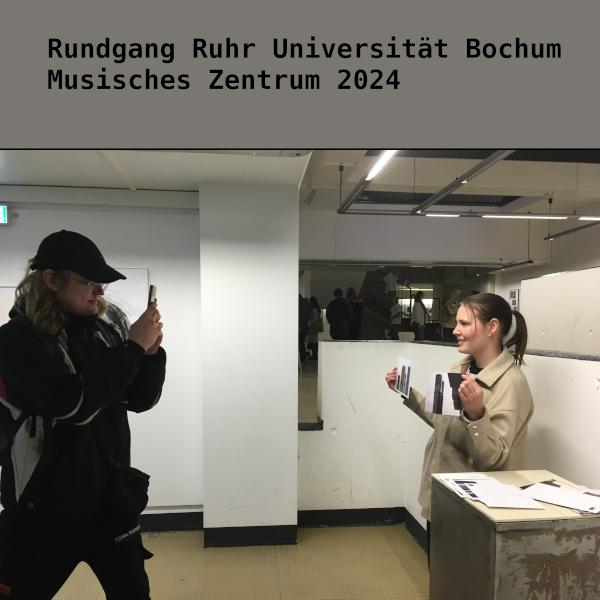
|
For an exhibition catalogue,
I am writing about a familiar topic, but an under-lit relationship
structure in it: between handwriting in graffiti, stylepieces and
official typography.
|
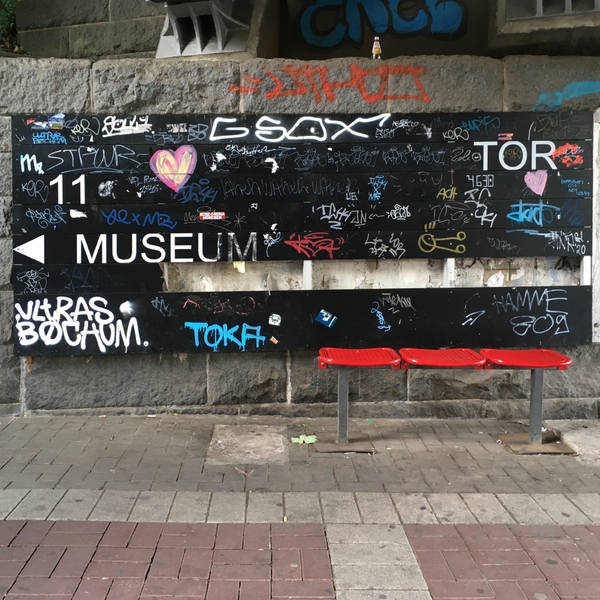 |
| As a continuation of the "Area" series
at the Ruhr-Universität Bochum, this time it's not about cities in the
Ruhr, but a particular urban area and its art: the Ruhr-Universität
itself and its surroundings. |
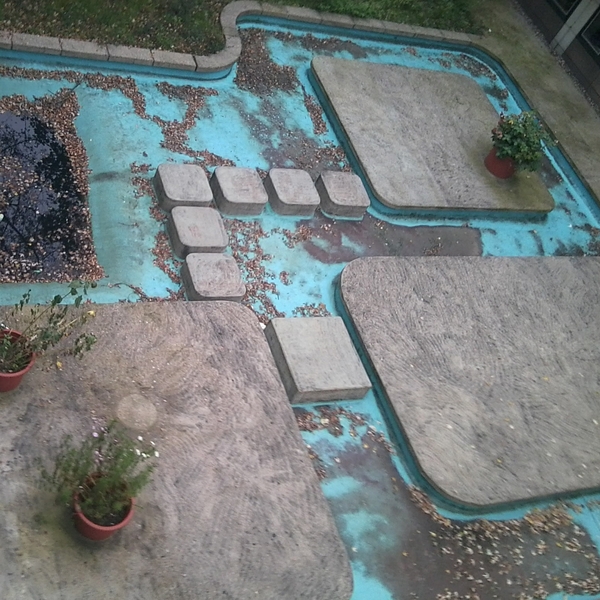 |
Multiples:
I have been thinking about this for some time. Artotheques have many
editions anyway; artistic media like all graphic techniques suggest the
edition as a form of publication. Now I'm supposed to write a
historical overview for the Jena Art Collection.
|
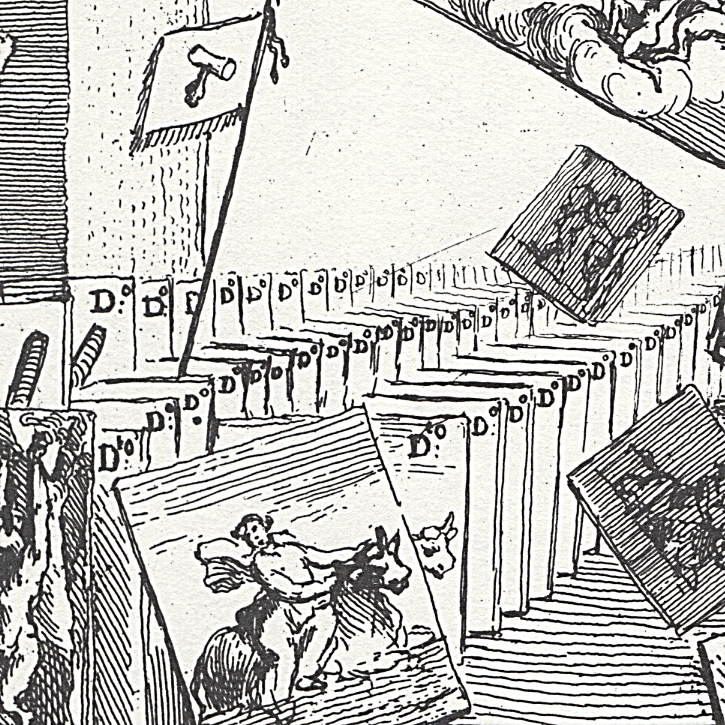
|
Now
it's a reality: the "Ringbuch" that I have been preparing for too long
is printed and will be presented to the public. It documents what Frank
Bölter, Matthias Hoffmann, Uschi Huber, Johanna Reich, Jan Rothstein,
Boris Sieverts and others have produced as artistic projects on
Cologne's "Ringstraßen" (main circular street) between 2017 and 2019.
The whole is reflected by essays and interviews, among others by or
with Kay von Keitz, Stefanie Klingemann, Kaska Kmiotek and Dirk Tillack.
|
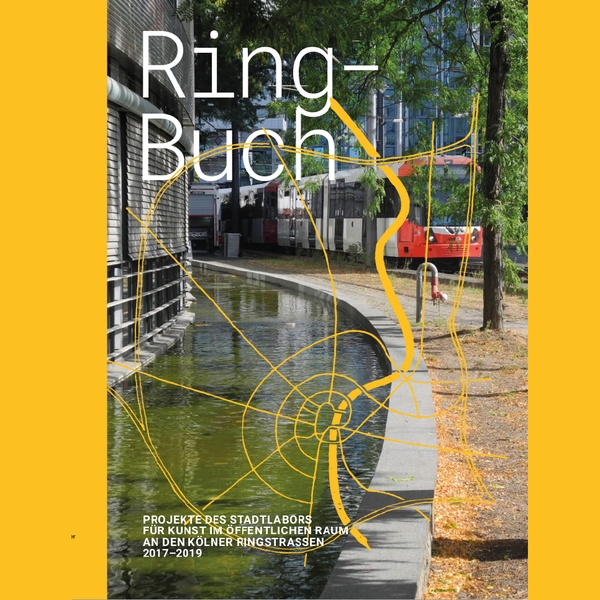
|
| The Kunstmuseum Bochum
is showing a major exhibition by Takako Saito - and has used some of
the furniture she built herself and even partly the floor of her studio
for this playful approach. Some videos of older actions and a large new
installation by the 94-year-old artist are also on show for the first
time. |
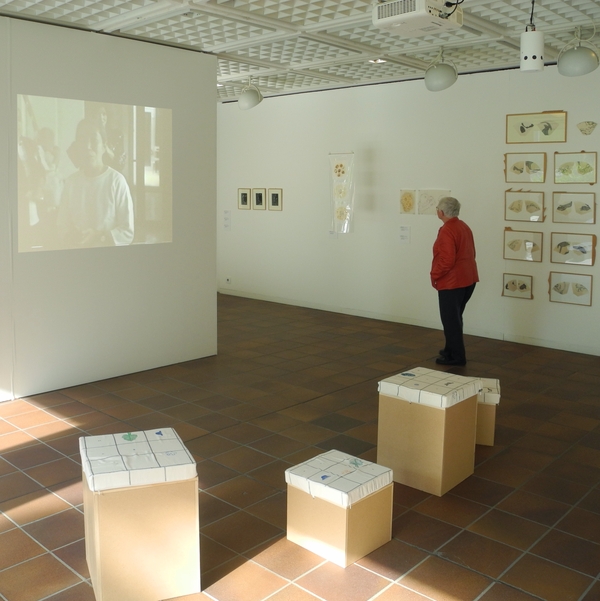
|
| A recent course for American students at AiB in Bonn
brought me together with students, some of whom were fantastically good
at drawing - and also used this skill to approach places like the
Hombroich Museum Island or the Bonn ministries in the Kreuzbauten. |

|
| The third exhibition in Serigrafiemuseum Filderstadt
was the last one I curated. Based on the exhibition title "Walls and
Layers", the works dealt with questions between figure and ground,
between image and support. There were brilliant names from the
collection, an Aldi shopping bag and a silkscreen by Denise Winter executed directly on the wall and paper hanging in front of it. |
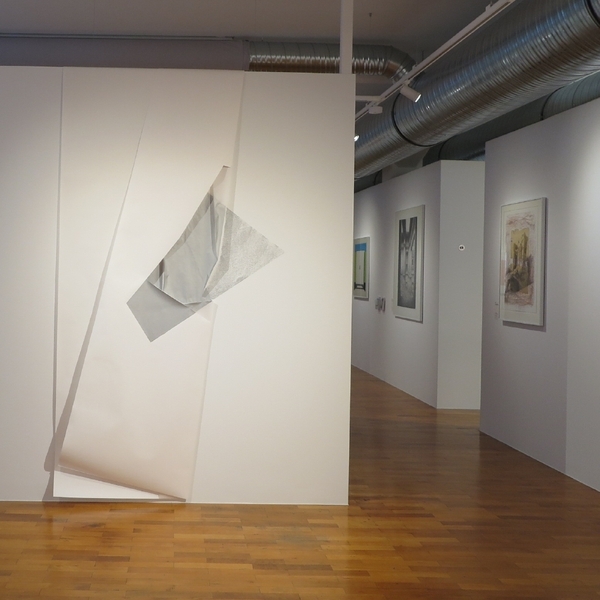
|
| Once again, an assignment is in the works to further record art in buildings - the Museum of 1000 Places (Museum der 1000 Orte) portal created by the Federal Office for Building and Regional Planning (Bundesamt für Bauwesen und Raumordnung) is growing. I'm also trying to see all of the 50 artworks assigned to me myself. |
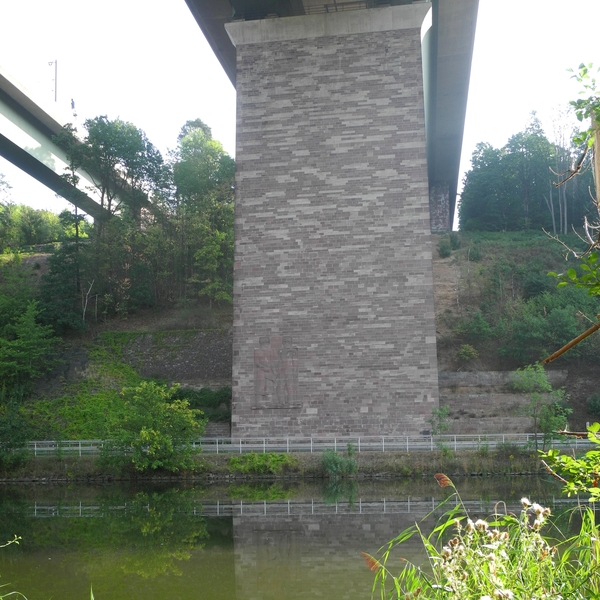
|
| The
magazine "Alte und Neue Kunst" (Old and New Art) of the Verein für
Christliche Kunst (Association for Christian Art) in Paderborn is
published only every two years. Here I was allowed to report on a trip
I took to prepare the project "Wandelgänge". In order not to anticipate
these artist's walks, I concentrated on places to which it was not to
go in the end: Fulda, Heiligenstadt (here a Jeremiah figure by Gerhard
Marcks socketed as a monument to displaced persons), Externsteine,
Halberstadt, Erfurt ... |
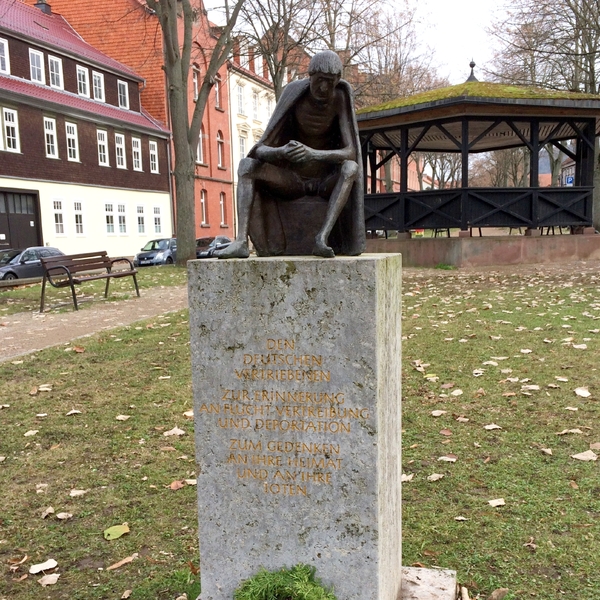
|
| This is already the second exhibition I have been able to curate for Serigrafiemuseum Filderstadt (Filderstadt Serigraph Museum). It is about stories that find many
forms in this exhibition. The pictures by Birgit Jensen, printed on
canvas with silkscreen, add an aspect that is as contemporary as it is
supra-temporal. |
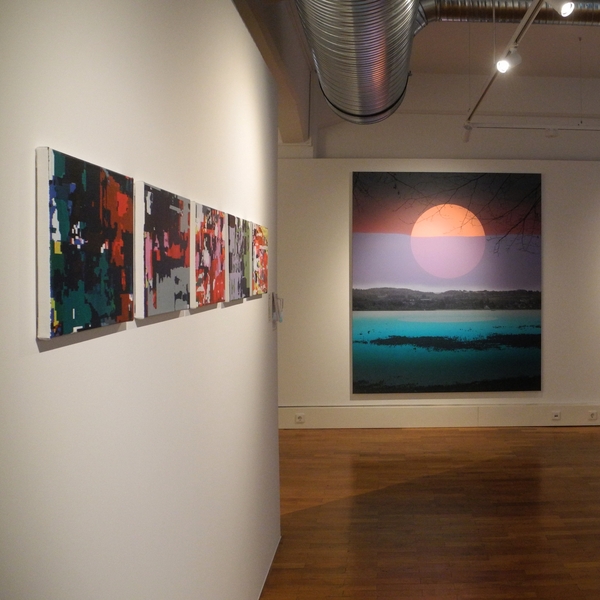 |
Once again there are artistic forays through Neu-Ulm. This time I have invited Denise Winter.
A cut-out of aluminium sheet accompanies us through the small town,
along with passe-partout sheets for all participants, as visual aids
and notepads. We encounter peculiar situations in the urban space, talk
about water shortages, spatial and physical situations. At the end, we
stand in an unexpected courtyard and everyone reads their notes in a
kind of speech fugue.
|
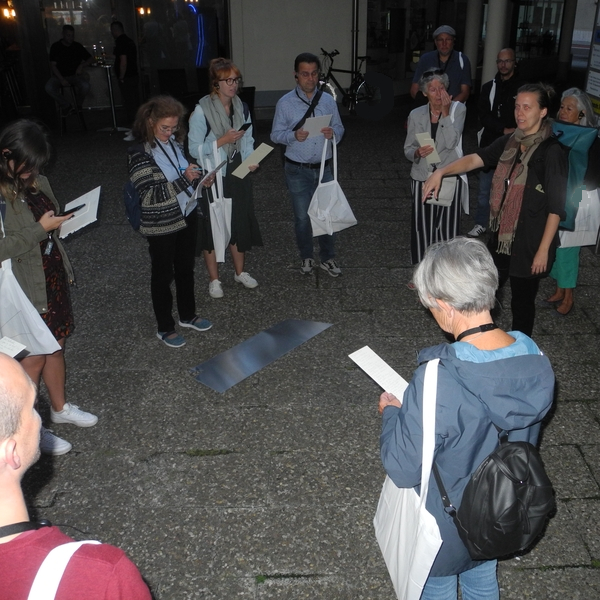 |
The
third intensive study week of the international research project
"Graffiti Art in Prison" by my colleague Gabriella Gianciolo Cosentino
at the University of Cologne was about "The wall as a heterotopic
place". I was allowed to conduct a workshop for the academics and
students in Cologne who had come together for this. The event was
characterised by a tour of the walls of Ehrenfeld, postcards with views
and the written exchange of comments on them.
|

|
OUTSIDE
SPACES INSIDE VIEWS: an exhibition at the Edwin Scharff Museum in
Neu-Ulm shows perspectives on art in public space - when artists
produce them for the interior. On display are sketches, models,
documentations, relics and new versions - all of which are visual
reflections of the processes and contexts of works outside the museum
space. I am pleased to have Max Erbacher, Oliver Gather, Gigo,
Uschi Huber, Christian Hasucha and Dagmar Schmidt for this exhibition.
|
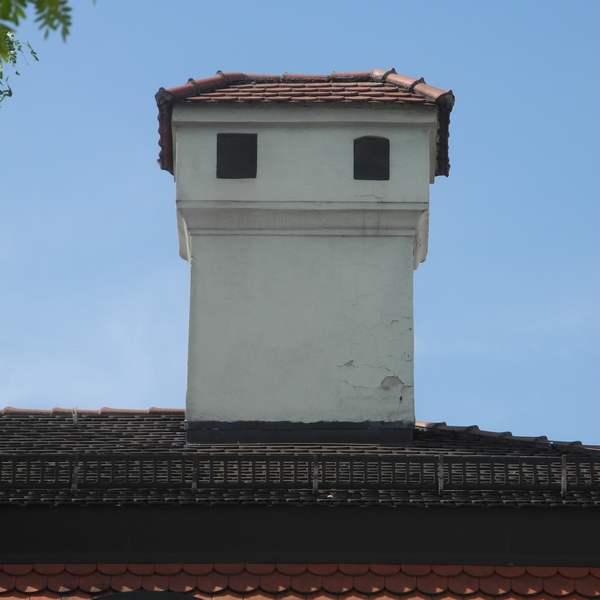
|
In CHAM's caricature, the jailer
looks in astonishment at the result of his temporary absence: the
incarcerated personification of the satirical magazine Charivari has
found company in his cell. My workshop with Gabriella Gianciolo Cosentino and
international students at the University of Cologne will deal with
prison graffiti - and corresponding situations in Cologne.
|
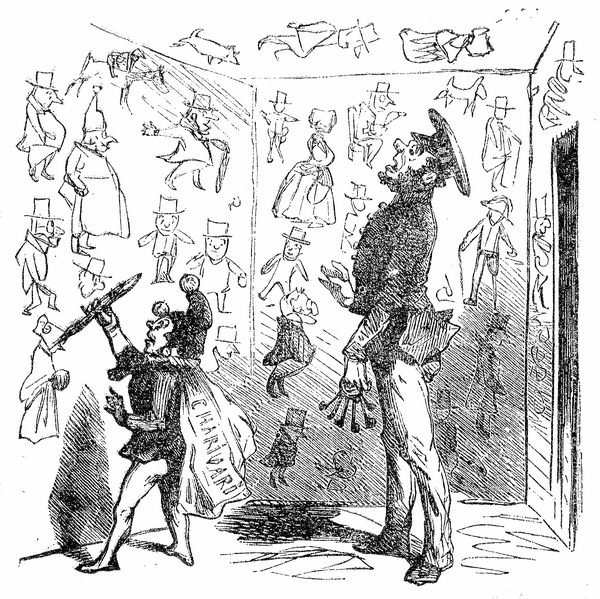 |
I asked the six-member art
collective KLUB7 from Berlin and Halle / Saale to make the first
contemporary contribution to the happenings at the Serigrafiemuseum
Filderstadt. The result is a multi-layered collage of materials and, on
the wall opposite, a large-format serigraph on wood.
|
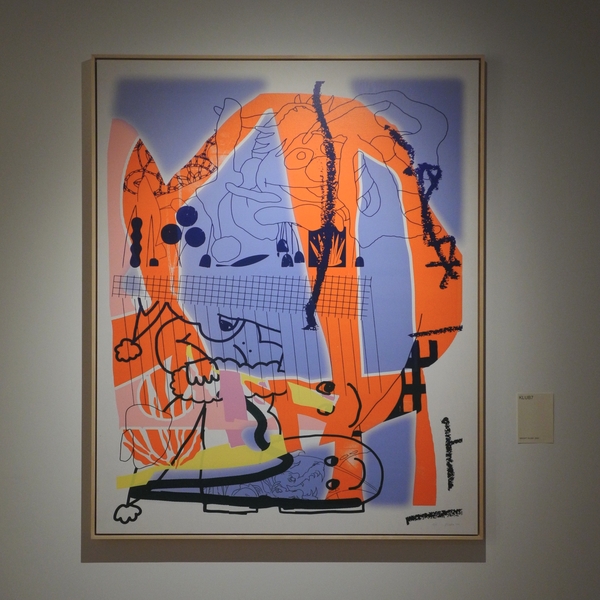
|
After a long start-up period, it
is now open: the Serigrafiemuseum Filderstadt. Every four months, it
shows exhibitions of art that uses the fascinating possibilities of the
screen-printing technique.
|
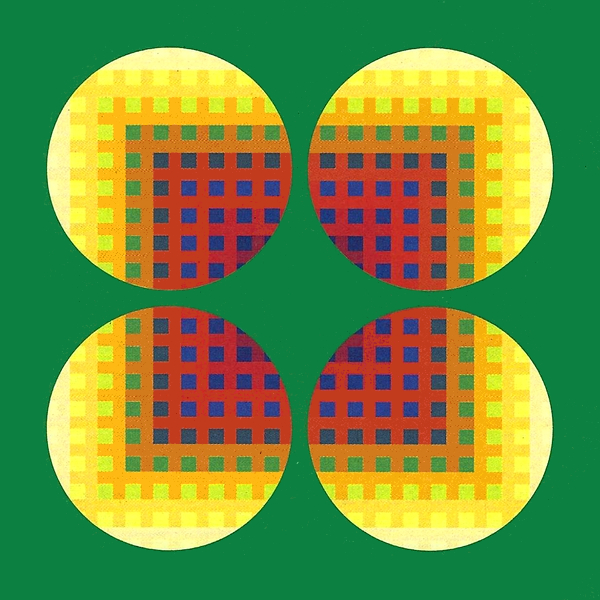
|
I have always held Harald
Naegeli in high esteem as a draughtsman in public space and hardly less
as a draughtsman on private paper. Now I have written a small text for
his exhibition in Berlin.
|
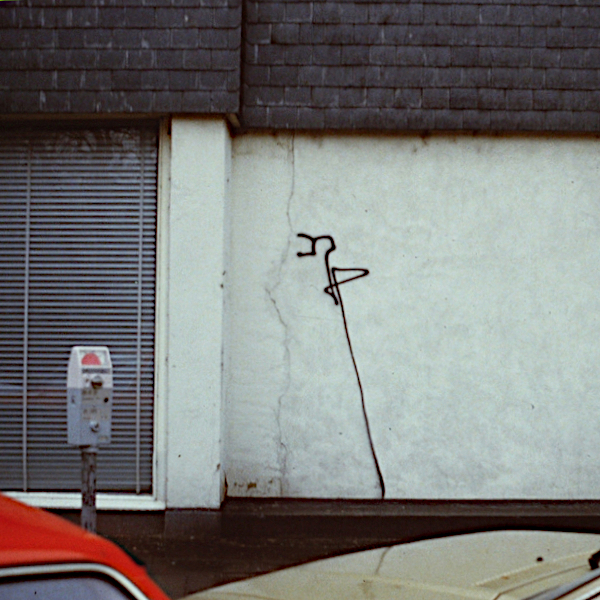
|
Torsten Illner has created a
convincing graphic realisation for the envisaged artistic walks in the
area of the church province of Paderborn. This is particularly
remarkable because these walks can hardly be associated with a
pictorial form in advance.
|
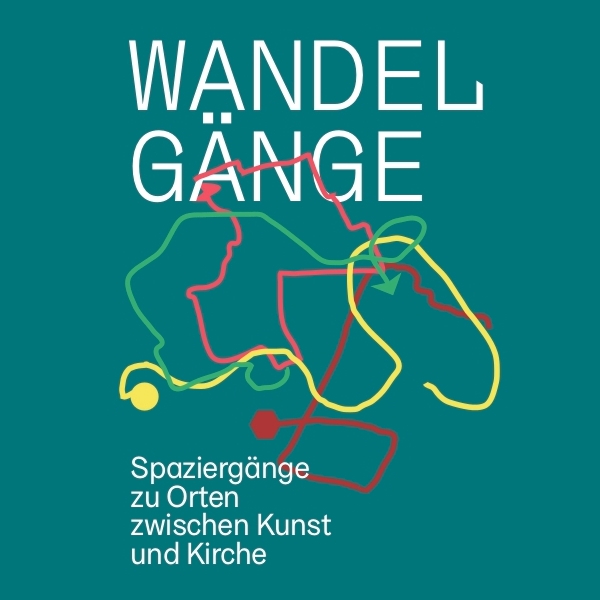
|
Together
with Denise Winter, there will be another seminar in the summer
semester of 2022 at the Musisches Zentrum at
Ruhr Uni Bochum. This
time it's about the role of art in urban contexts and the Ruhr "Gebiet"
(area). Excursions are planned, as well as real seminar meetings and
the students' own small works.
|
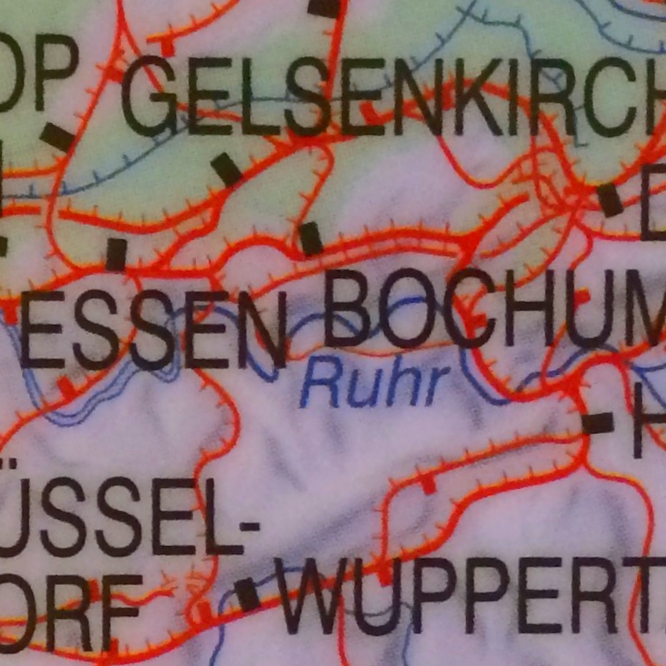
|
Janina Schmid
connected her scholarship for the Kunsthaus Kloster Gravenhorst with a
special project: a trailer became a selfserviceselfiebox. Small ready
sculptures were available for visitors to produce their own selfies in
this camera obscura. For the documentation of the results I wrote a
text.
|
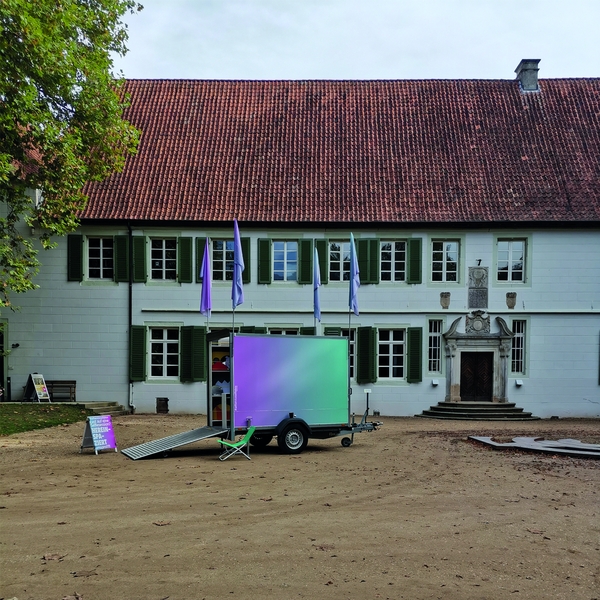
|
It looks like after a long break there will be another course for American students after all at AiB, Bonn.
Again, it will be about "The Making and Use of Space". But now the Bonn
Minster is accessible again, a wonderful place to think about such
questions together.
|
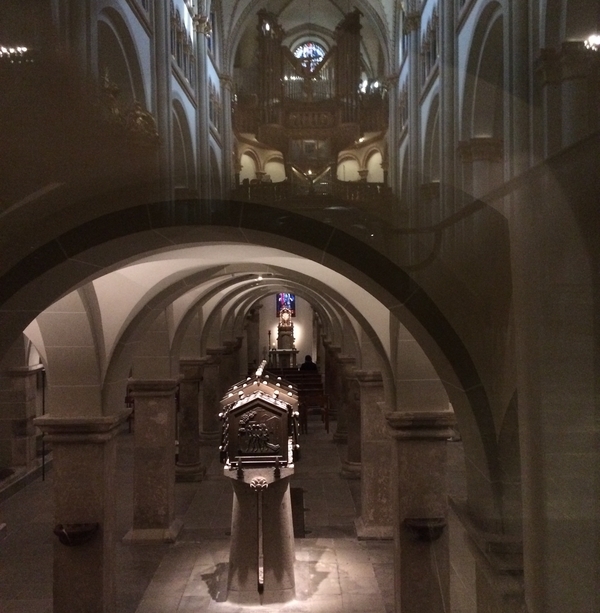
|
I
rarely participate in blogs. However, I simply had to make an exception
for the Academy of Arts Saxony-Anhalt, which I hold in high esteem. I
also wanted to talk about herman de vries, an artist whose work I have
known and admired for more than thirty years. That was the reason for
my pilgrimage to his Sanctuarium in Stuttgart. Here are my impressions.
|
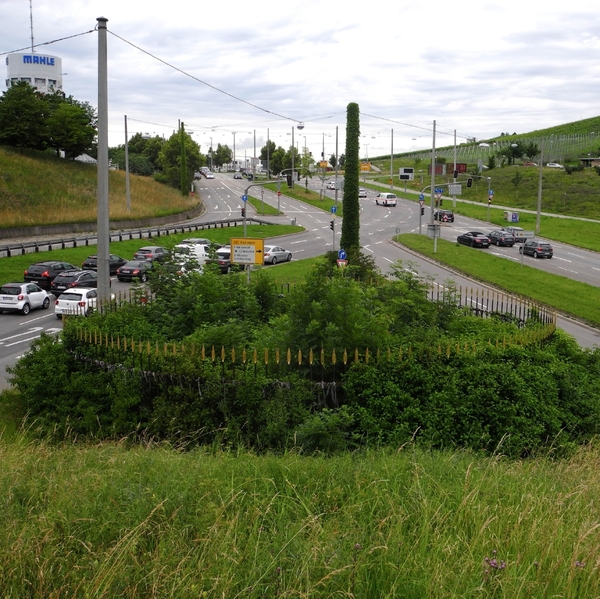
|
For
some time now, the Cologne artist Gabriele Seifert has been poaching I
Ching signs in selected places: the oracular golden strokes of eastern
origin get into the most diverse situations and contexts. From her
photographs collected in annual photo books, she is now compiling a
larger book, to which I may contribute with a text.
|
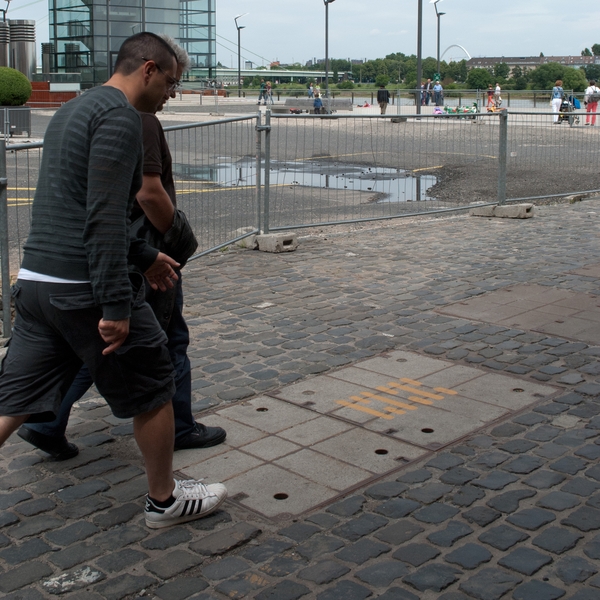
|
There is a hail of
cancellations of cultural activities and warnings against contacts. The
pandemic is so virulent that even the unvaccinated are beginning to
think. I wonder whether I can forget about my course for American students scheduled for
January.
|
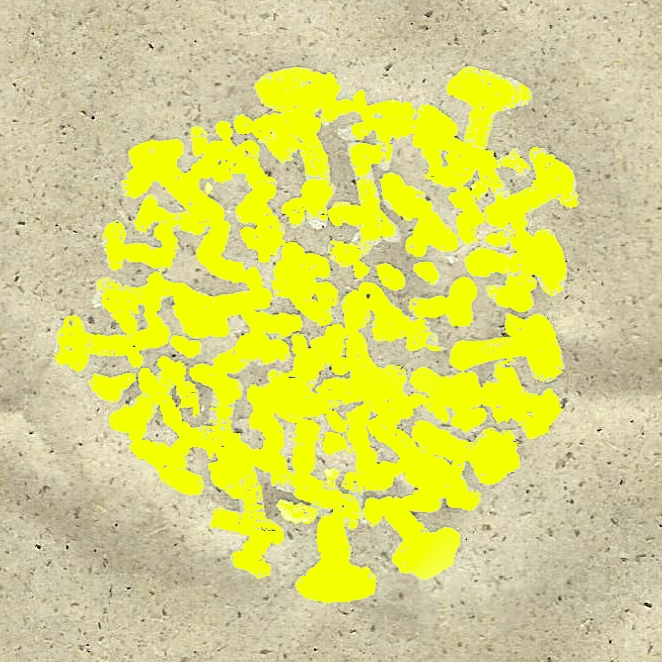
|
I
had already announced it, now it has appeared: the volume edited by
T.O. Immisch and Siegfried von der Heide is a literary local history
book about Halle an der Saale. In addition to the publisher's
information, there is also a homepage with pictures and short texts.
|
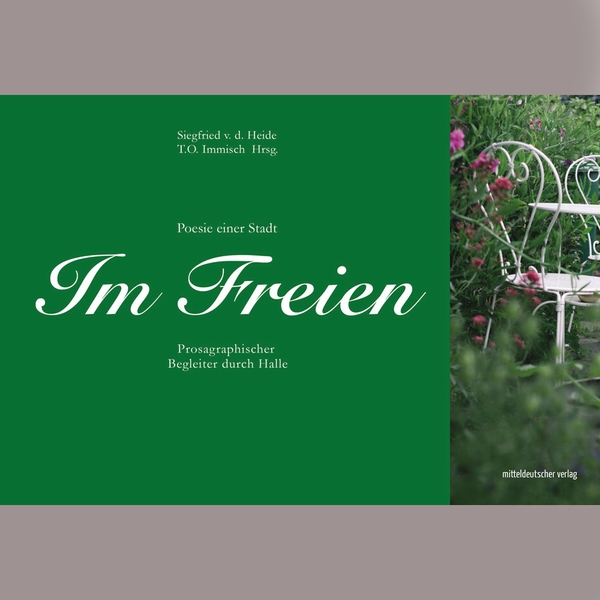
|
| In 2022, the Association for Christian
Art in the Dioceses of the Church Province of Paderborn would like to
organise a series of walking talks. I have suggested a number of
artists and locations for this. The project is still in the development
phase; after all, the area extends locally from Paderborn via Erfurt
and Fulda to Magdeburg. In terms of content, the dimensions between art
and church are likely to be much broader. |
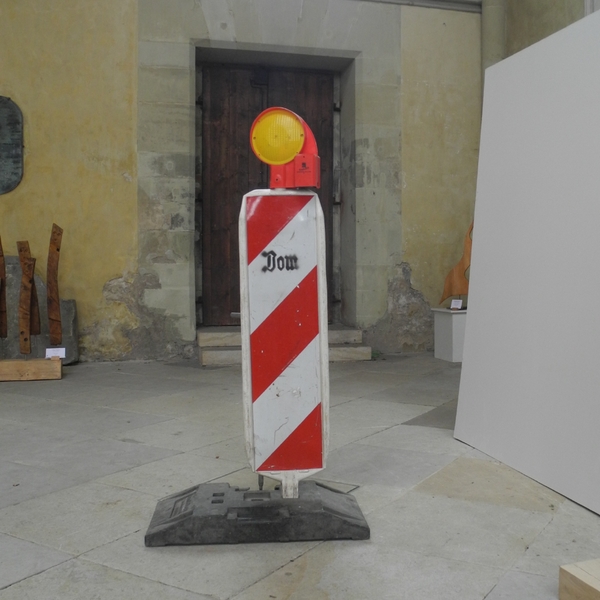
|
I wrote an article for
Johannes Traub's catalogue about his multi-layered landscapes - and of
course about processes of painting.
|
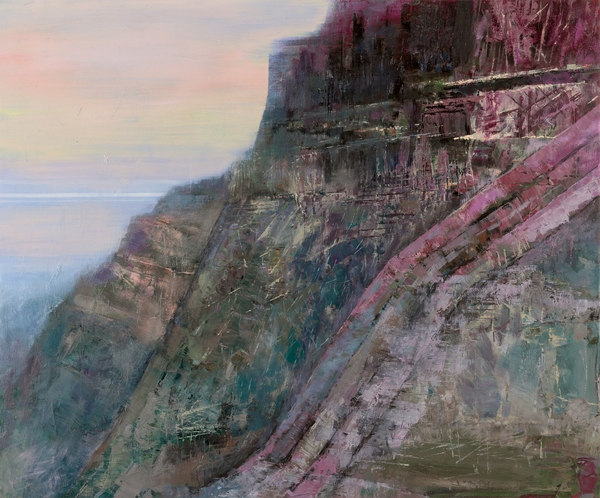
|
After a break due to the pandemic,
the walks through Neu-Ulm continue. Starting from the Edwin Scharff
Museum, Uschi Huber and Oliver Gather have discovered new aspects of
the cityscape during public walks.
|
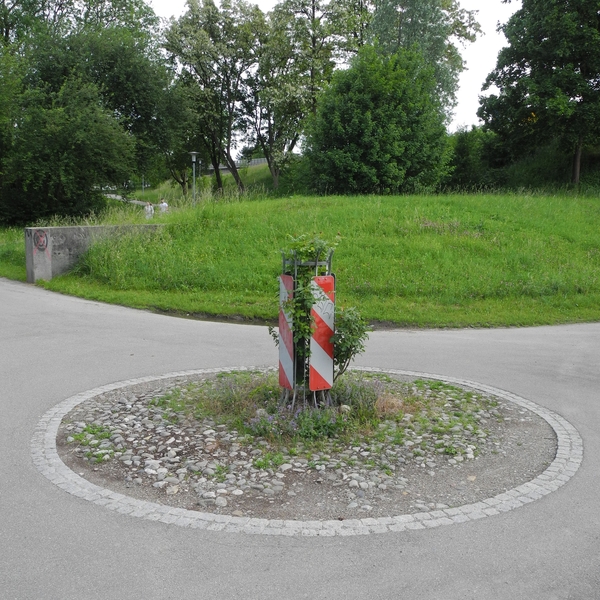
|
Together with the photographer
Jürgen Domes, it was planned that we approach the enigmatic open urban
space in Halle, which can be found in the plan under the name "Brunos
Warte". Unfortunately, the direct interaction did not happen: Jürgen
died unexpectedly recently. His soulful images and my text now appear
in the book "Im Freien", edited by T.O. Immisch and Siegfried von der
Heide.
|
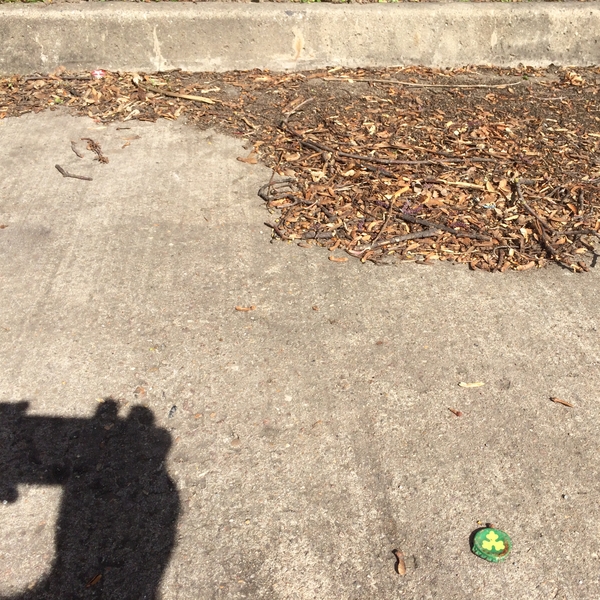
|
What to do when a symposium on
landscapes, postponed several times due to the pandemic, becomes a
restricted working meeting and it is still really cold in the
Renaissance castle of Kannawurf? I improvised, moved my lecture outside
and explained the key points using elements of the building and its
surroundings. My left visual material can still be used in the planned
documentation.
|
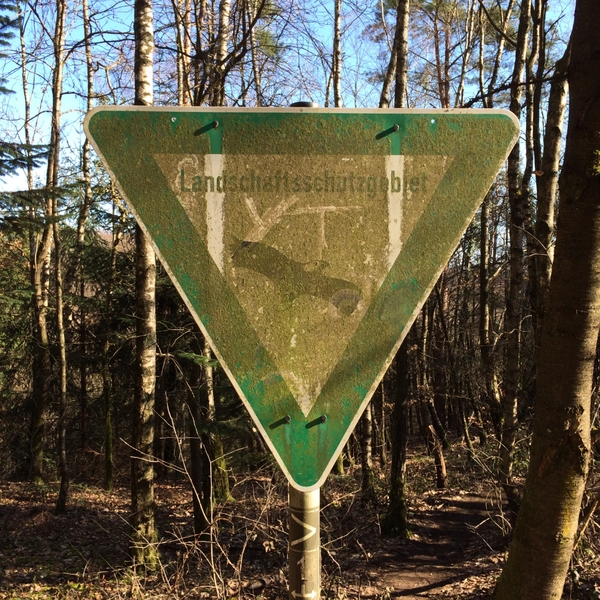
|
I have known and appreciated the
work of the Düsseldorf artist Wolfgang Spanier for a long time. Now my
text on his recent photos has been published in a beautiful catalogue.
|
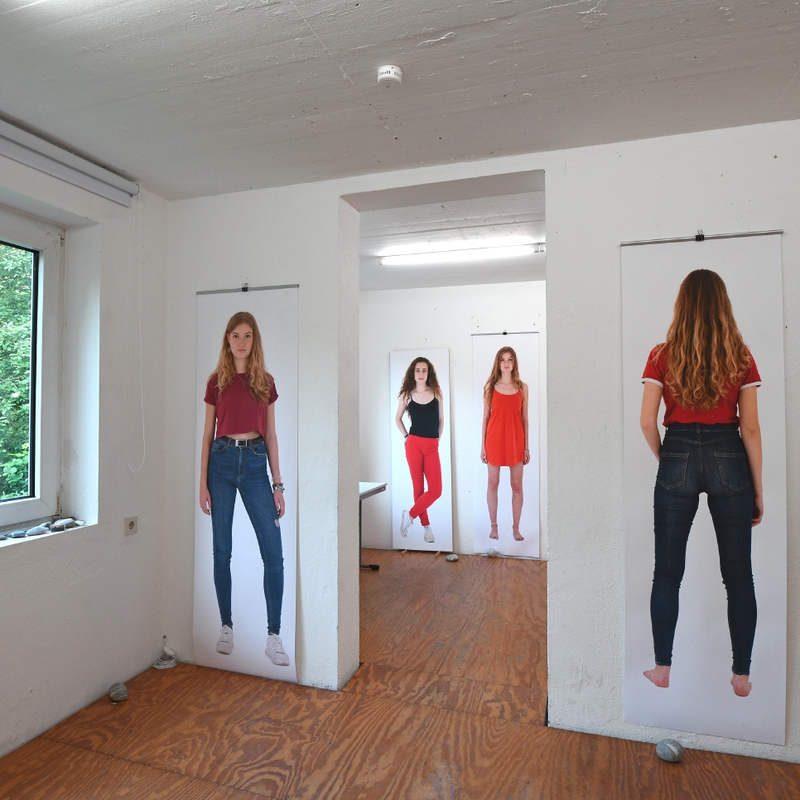
|
A
seminar in the summer semester at the university in Bochum, together
with Denise Winter: according to the time circumstances, we will deal
with walks. It is still open what form it will take and whether it will
end up with something like editions.
|
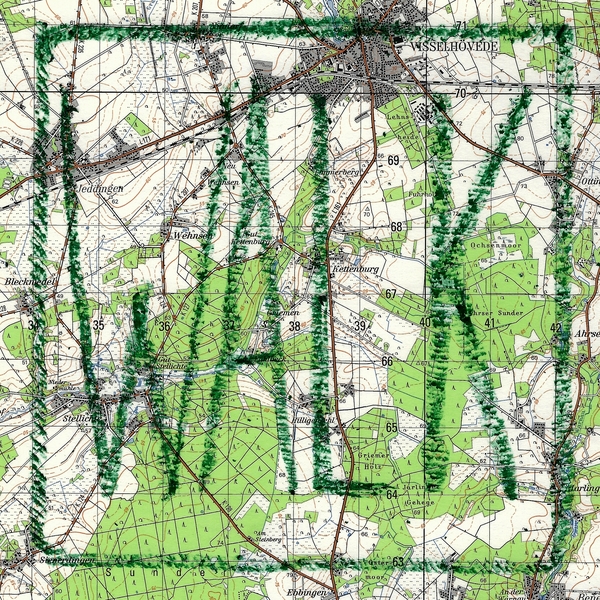
|
| A publication is being produced on the artistic actions during the
Cologne City Lab 2017 and 2018. I will compile documentation, feedback
and further reflections. |
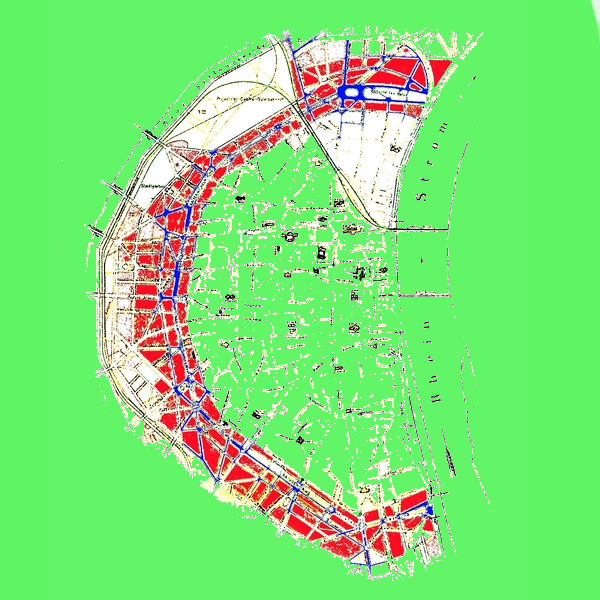
|
Takako Saito has long
deserved her own homepage. She has created many chess games and played
with the forms and rules. This is a good starting point for a course
that conveys this rich artistic oeuvre on the internet: Zandra Harms
will make this basic idea work.
|
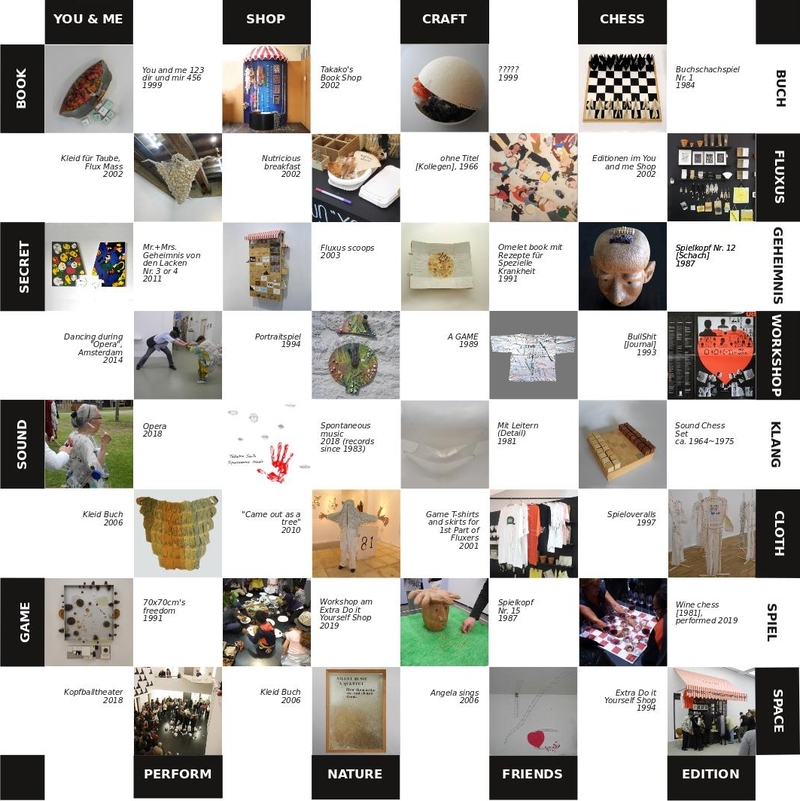
|
A museum dedicated to
artistic silk-screen printing is built in Filderstadt. Luitpold
Domberger introduced this exciting printing technique to Germany in the
early 1950s, and his son Michael Domberger continued to lead the
company to world fame. Their collection of exquisite silkscreen prints
was acquired by the state of Baden-Württemberg in 2009. I still have an
intensive curatorial period ahead of me until the opening scheduled for spring.
|
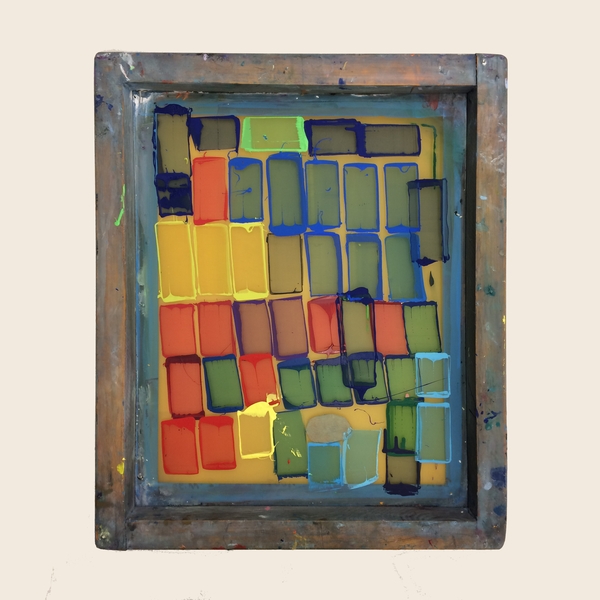
|
In the end, the seminar in
Bonn and on the Internet produced really positive results. In the shop
window of the AiB there are now posters in which the students put their
aspects of the topic "The Making and Use of Space" into shape.
Sometimes the stressful situations of quarantine play a role in this
"poster section". My collegue Carolin Wübbelt made a perfect job
presenting them.
|
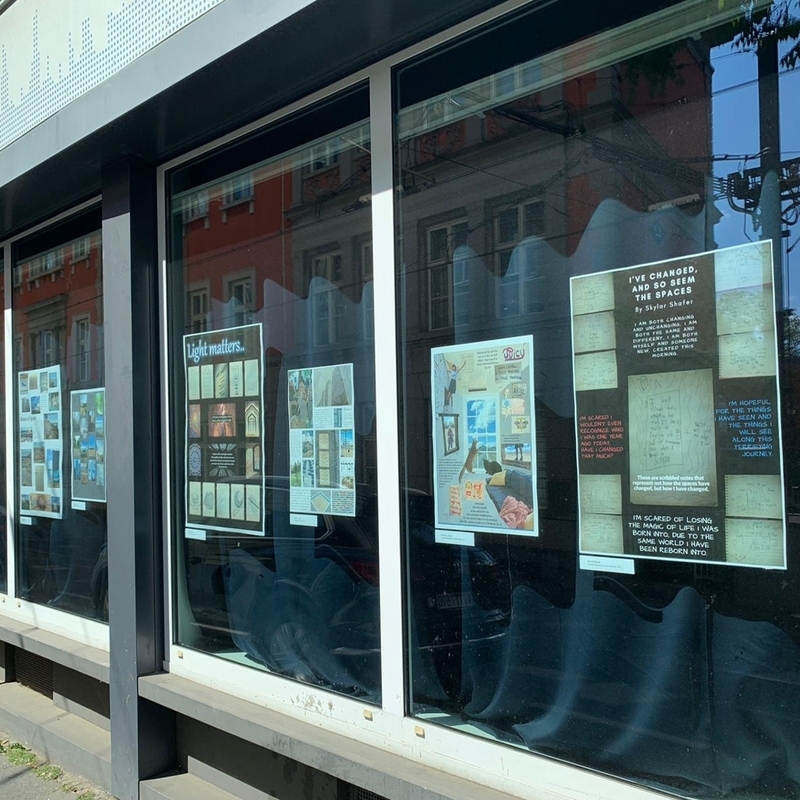
|
When
I stepped out of the house in the morning, I saw a plastic structure
next to the entrance. A neighbor's kid must have made it. I think that
this child probably saw a picture that was flickering more often on the
TV monitor lately. The problem of the pandemic has not been solved with
the production of this magical plastic, but perhaps we are beginning to
get a clearer idea.
|
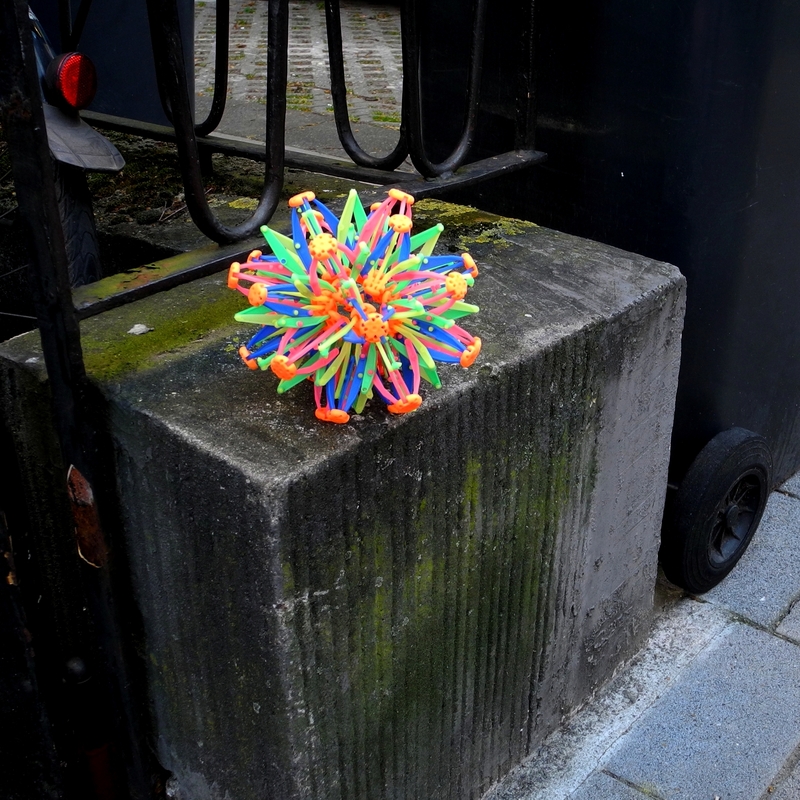
|
The seminar for the spring
semester at the AiB took a strange course. While, as usual, numerous
joint excursions and drawings took place on site until mid-March, the
corona crisis forced a radical rethink. The students are now sitting on
the east and west coasts of the USA or in Egypt, I'm at Cologne, all of
them at computers. The topics now are more this special situation, the
domestic environment, coping with the quaternary including boredom. At
the end there is not a joint tour through Bonn, but posters which make
these experienced differences the subject of discussion.
|
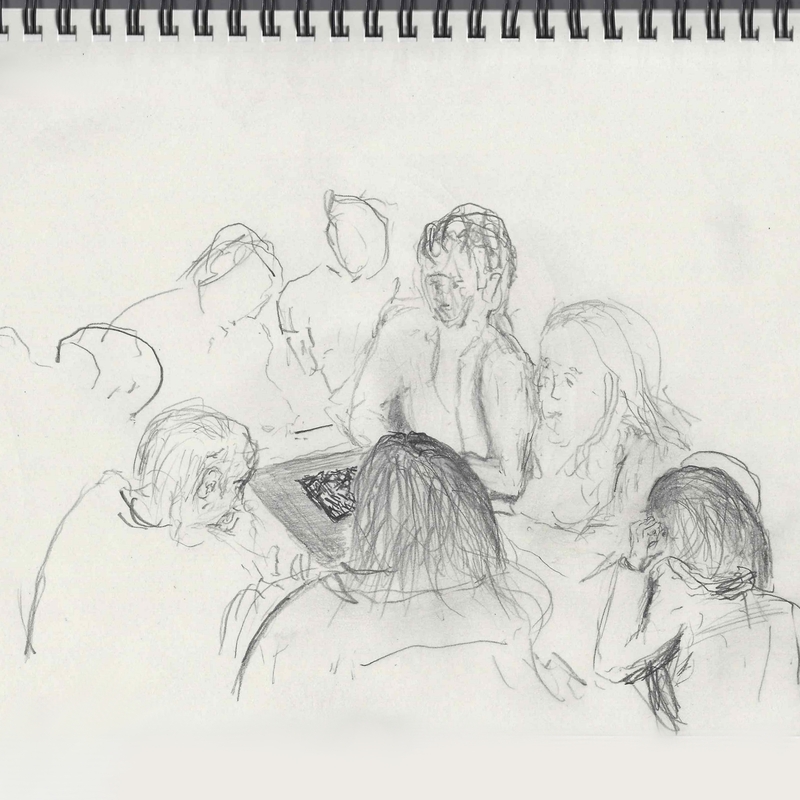
|
The banks of the Rhine near Bad Godesberg are the subject of a project by Cologne architect Stephanie Brandt for Penn State University and AiB
in Bonn. I am to contribute impulses from culture and history, pointing
out perspectives and impressions. The best way to do this is to go on a
bike tour together. Headsets are used.
|
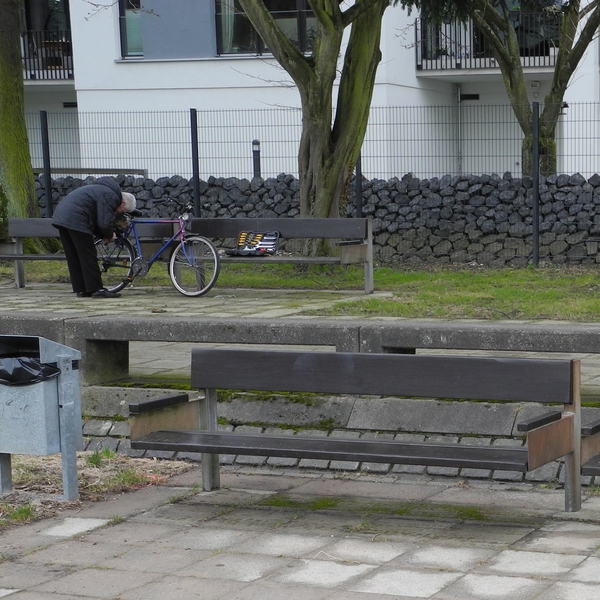
|
At the
Université Bordeaux, students asked me about the circumstances of
curating. They had invited me to do so when Takako Saito's successful
exhibition at the CAPC musèe d'art
contemporain de Bordeaux entered its final round. To this end, I also drew on older correspondence with artists.
|
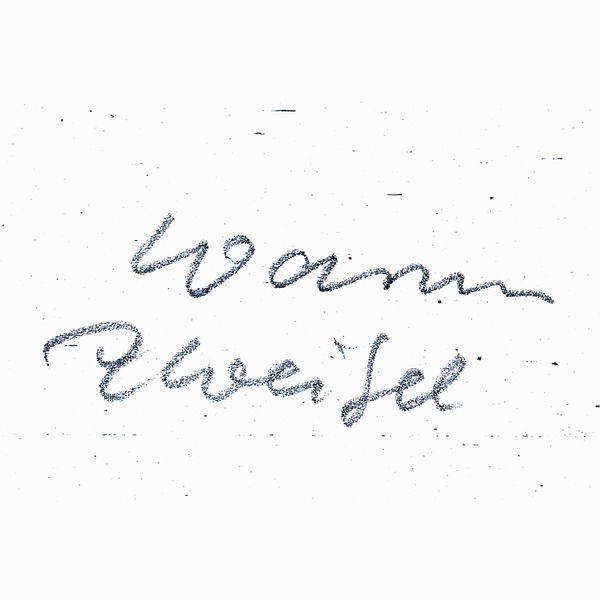
|
Students of Loyola Marymount University attend my new seminar for AiB,
the Bonn Academy for International Education. Suggestions from previous
courses have led me to focus on one topic. It is about "Relics of
Future" and, as a counter-perspective, about "Future of Relics". The
discussion involves the development of urban spaces, books, the
preservation of historical monuments and the veneration of legacies.
|

|
The
walks in Neu-Ulm, now known as "rambles", will continue in 2019.
Starting again from the Edwin-Scharff-Museum, artists and the public
will take a closer look at the city. Such different approaches and
perspectives as those of katze und krieg, Max Erbacher or Rita Lass and
Anne-Kathrin Pohle promise interesting outlooks and insights.
|

|
In
the Thüringer Künstlerhaus Schloss Kannawurf I will soon be talking
about landscapes and rural areas. Because there is still some time
left, I have the opportunity to think about it more thoroughly. For
example, the changes in the centres of villages like the one I grew up
in occupy me. Older houses sometimes fall into disrepair, while new
ones are being built on the outskirts of the village. Probably also the
still unspoilt view into the landscape plays a role.
|

|
For the city of Neu-Ulm I have created an electronic portal to art in public space. Art-tours
lead to selected artworks, squares or noteworthy architectures. You may
choose whether to regard artworks alongside the Danube, or reflect how
they handle the city's military past or questions of centering. Introductory texts, comments and further considerations are available on site via QR codes.
Initiated by the Edwin Scharff Museum, the portal was created for the 150th anniversary of the city. It was designed and programmed by Zandra Harms. |
 |
| The
opening of Takako Saito's exhibition at the CAPC musèe d'art
contemporain de Bordeaux confronted me with a whole series of unknown
aspects. Above all, the mass onslaught of the public on the exhibition
required a great deal of management. The ninety year old artist patiently
underwent the signing hour for the catalogue. |
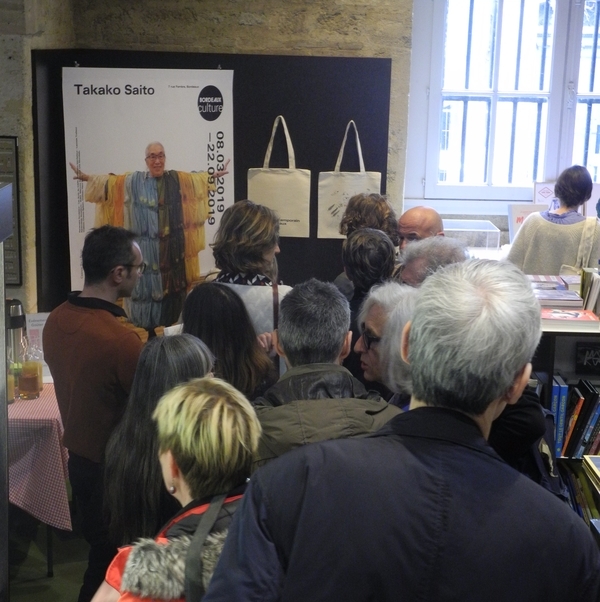
|
| In
the spring of 2019 I had to do with engineering students at the
AIB in Bonn. They come from Lafayette
College in Pennsylvania. It is obviously easy for them to improvise a Romanesque
church in the freshly fallen snow. |
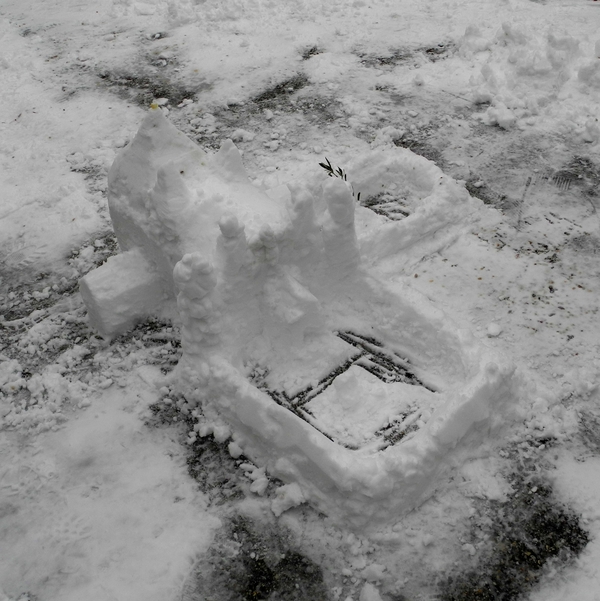
|
Neu-Ulm: the little sister city on the Bavarian Danube side across from Ulm will be 150 years old. The staff of local Edwin-Scharff-Museum
takes this as an opportunity to think about the cityscape and the
public sculpture stock. I may therefore invite artists to
explore this city in open-ended walks.
|
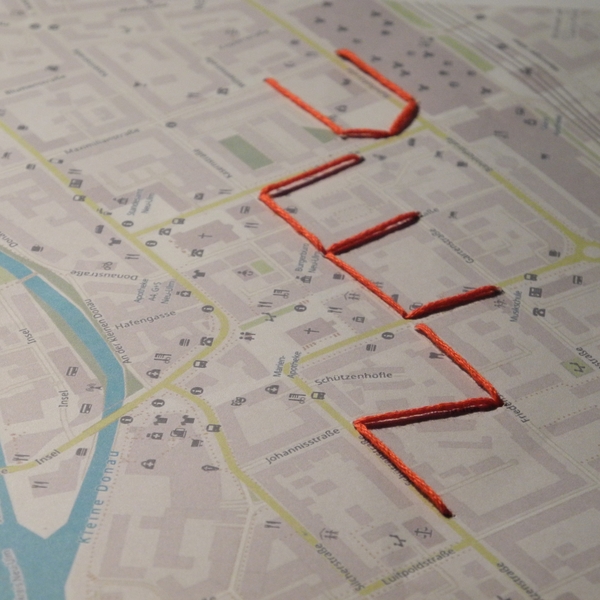
|
| In a small but fine selection on the art of Fluxus, the Ausstellungshaus Spoerri
(Spoerri exhibition center) in Hadersdorf in Austria has assembled
selected works of art. In addition to the regularly exhibited works by
Daniel Spoerri, many ideas that have become a concrete form of this
poetic, experimental and artistic art that goes beyond borders are on
display. Among them is also a larger part of Takako Saito's work. A
magazine published for the exhibition contains my little ABC about this
artist.. |

|
| Berlin-based artist Thorsten Goldberg
has created a subtle and mediating installation at the canteen of the
Bonn Federal Ministry of Education and Research: "Reflected ministry",
as a projected image sheet, presents other artworks, in part
significantly older but on the same terrain. Visitors can control the
sequence of photos on the glass by their own movements. A booklet is in
preparation, to which I was able to contribute a text. |

|
| The documentation for the art project "Fluchten" is printed. It is exciting to see the many ideas, discussions and artistic products collected and reflected. |
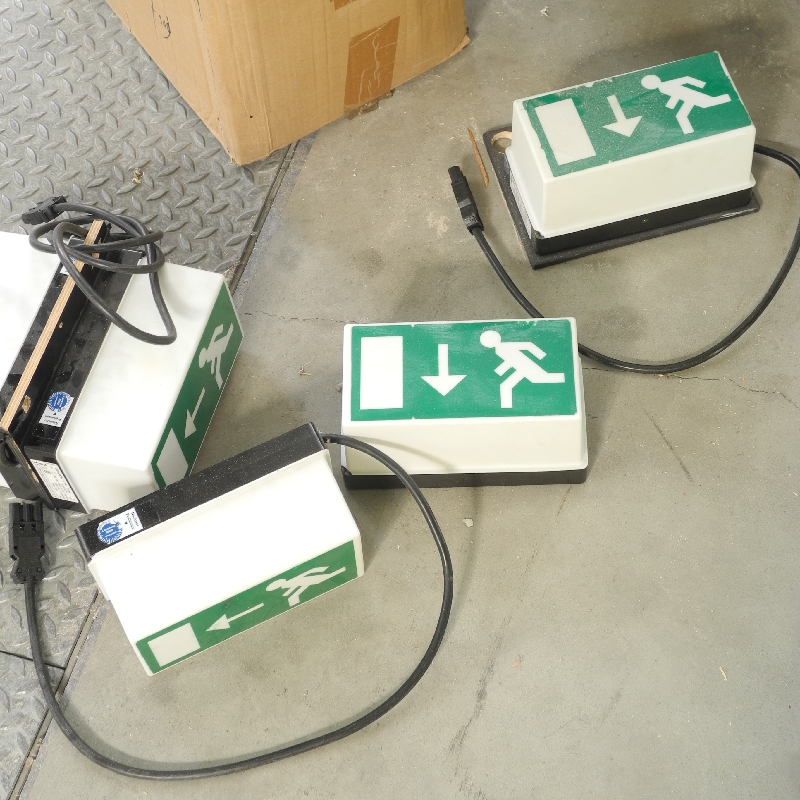
|
| In the new course for the Akademie für internationale Bildung
in Bonn students of animation are present. I am curious about their
results: studies deal with mouse holes, lonely places and social
readings of public seating. My part for this course is a short
discourse on art history. Whether such considerations can be included
in the results? |
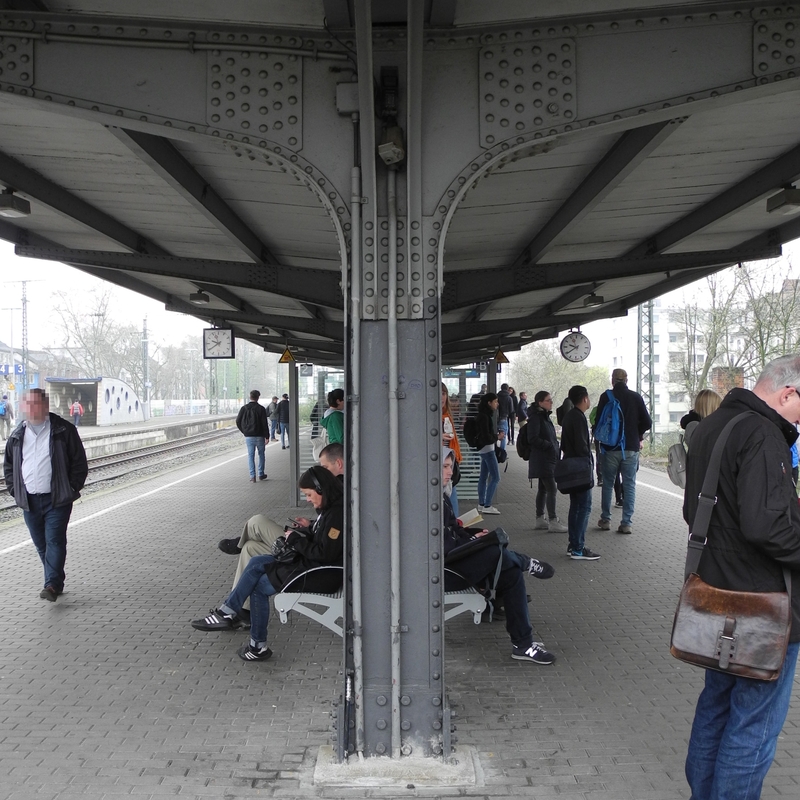
|
A wonderfully made small documentation booklet has appeared for Fuge, gefaltet17 by Denise Winter.
This production for the pilgrimage church in Neviges was based on a
poem about Europe, which the artist wrote on a journey and decomposed
by translations and convolutions into phonetic fragments. It was
performed twice in a choral dialogue. In addition, a slide projection
with images of "calving icebergs" illuminated this architectural
concrete sculpture.
|
 |
She is a fascinating artist: Takako Saito, whose great exhibition is now coming in the Siegen Museum of Contemporary Art. Alongside with it, a book is in sight, which will be edited by Eva Schmidt and me.
|
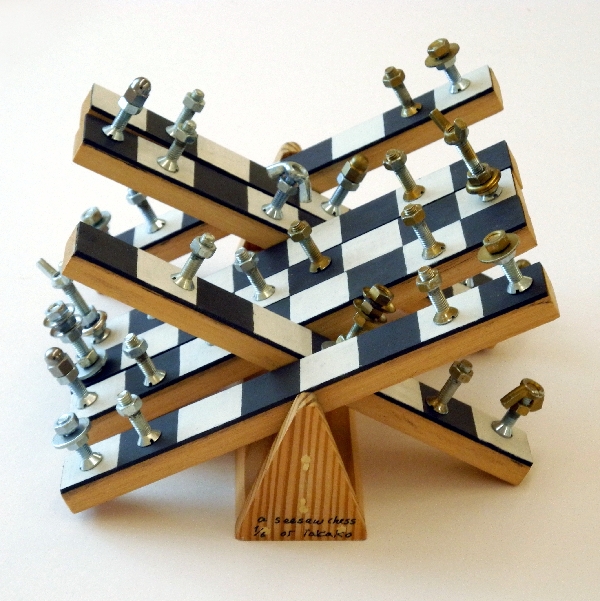
|
| With the title "urban art & architecture" a course of Architect Bruno Röver and me is running for students of Loyola Marymount University. Based at the Bonn Akademie für internationale Bildung, the seminar deals with art history and basic questions of space and architecture.
Excursions and individual sketch books are specials in this course. |
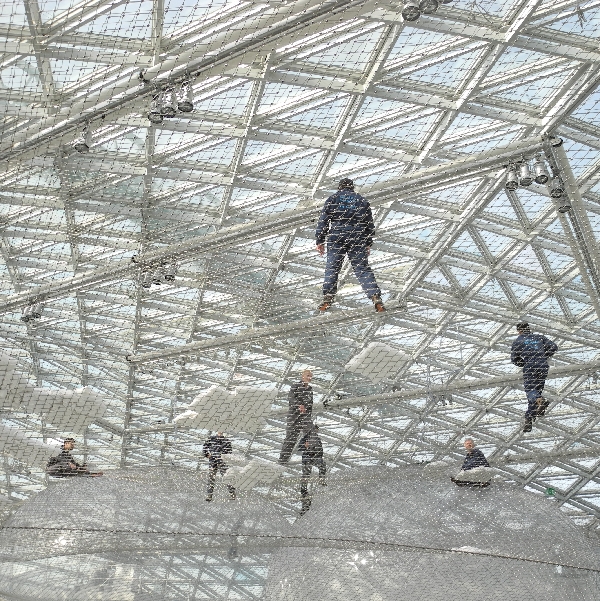
|
| It has started: the art project "Fluchten", having been planned together
with my collegue Ludger Hengefeld since some time for Caritas
Association in the Archidiocesis of Cologne. It is about widening the
narrow perspective focussing just on something like a "refugee crisis". The word is being framed by media and pictures according to it are repeated over and over again. This makes the discussion of these questions in general public an inacceptable narrow one. We hope reflecting these questions together with visual artists will help us to better perspectives towards these difficult
items. The questions of flight and its perspectives are in no way new:
Buddha, Christ or Mohammed have been refugees. |
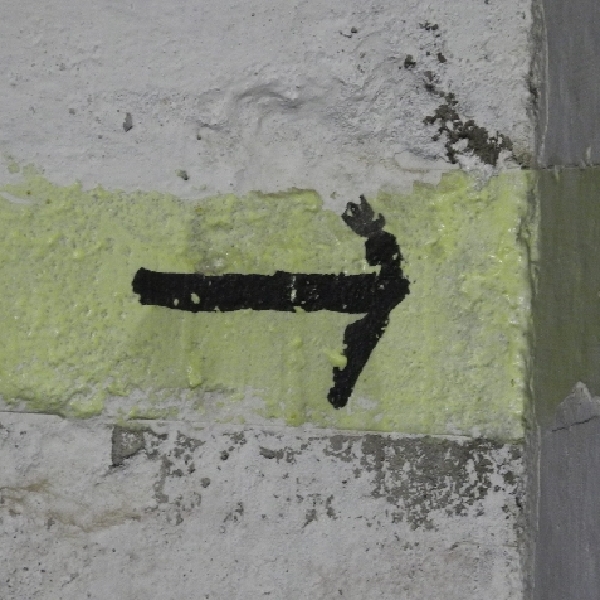
|
| It
was inspiring: together with my collegue Martin Seidel
we interviewed each other concerning art and street. Now this can be
read with the title "Kunst an Straßen- Fragen über Fragen" in the
journal "kultur politik" of Bundesverband Bildender Künstler innen und Künstler (federal artists association in Germany), No. 2/2016, p. 13-18. |
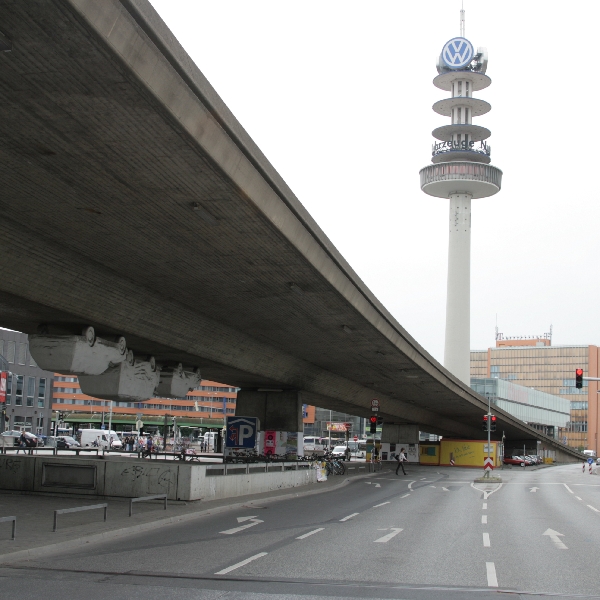
|
| Now, after a long time of preparation it came out: Protest Cultures, a Companion.
Kathrin Fahlenbrach, Martin Klimke and Joachim Scharloth have edited
the voluminous 546p book aiming to be a new standard on that item. As
to be expected, my small contribution focusses on Graffiti. |
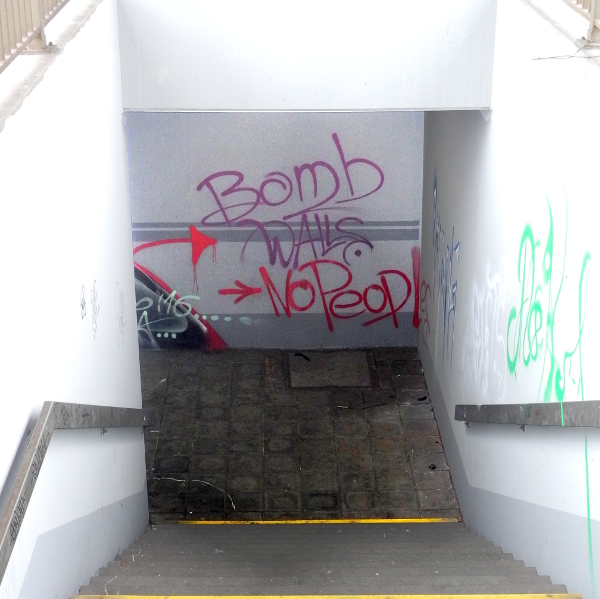
|
| An attempt for an artistic research on reception undertook by Dagmar Schmidt
concerning her work "Grabungsstaedte" now has lead to a publication. It is remarkable, in which many concerns this installation in the vanishing
Halle-Silberhöhe quarter has cause reactions since 2005.Biologists
list how and which plants have spread taking posession of their realm,
photographers with different objectifs show how the installed furniture
has been used and how the concrete becomes aged. Archeologists examin
the ground. I'm glad to hear that Kunstfonds and Kunststiftung Sachsen-Anhalt have funded the project - and happy to have contributed an introduction to such a fine thing. |
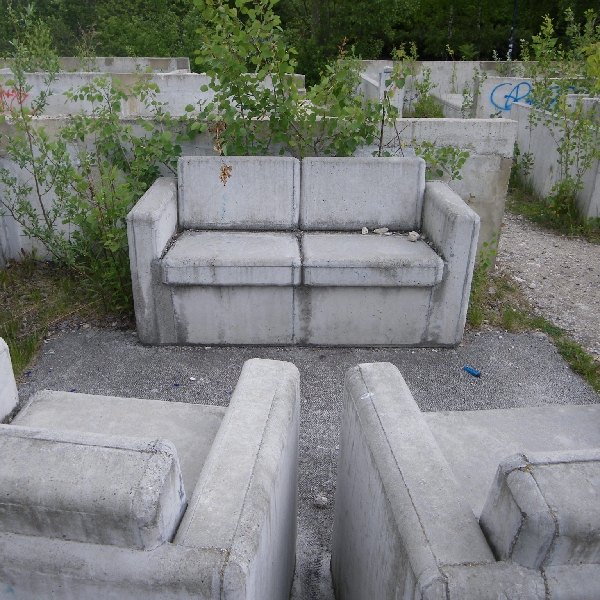
|
Since some years I'm regarding works by Honoré
Daumier. Now I finally wrote a small german text about his "Philantropes du jour" cyclus. Here we go.
|
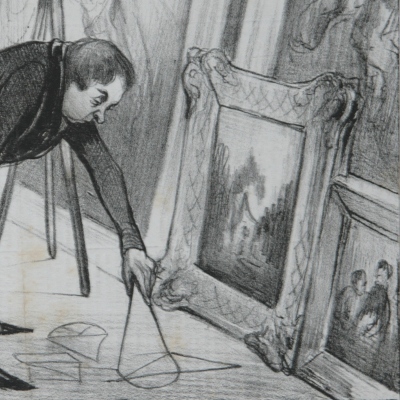
|
| Really, I did study this subject. Urbanistic
questions always have played a role for my projects. Without a special
focus towards this direction I was busy with city imagary and even
offered some guided walks for different towns. May 2013 now will bring
it all: it is about urban gaps in Halle and, by the end of may in Dortmund about the impact of street art on the pictural and meaningful side of towns. |
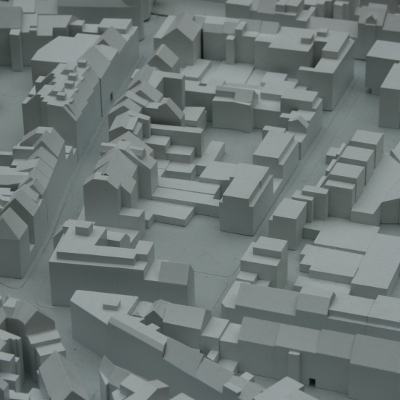
|
"Erbarmen
als soziale Form" is the name of the art project for the Caritas in
Cologne aiming to install a general discussion on charity, beginning
inJune 2013. Starting point is a bundle of questions on "Lebensmittel-Tafeln", which have some quite complicated impacts on social structure and social feelings. Seen historically images work with allegorical pelicans or nurses. It is worth asking for contemporary images of charity, feed and spirituality.
German homepage of the projekt
|
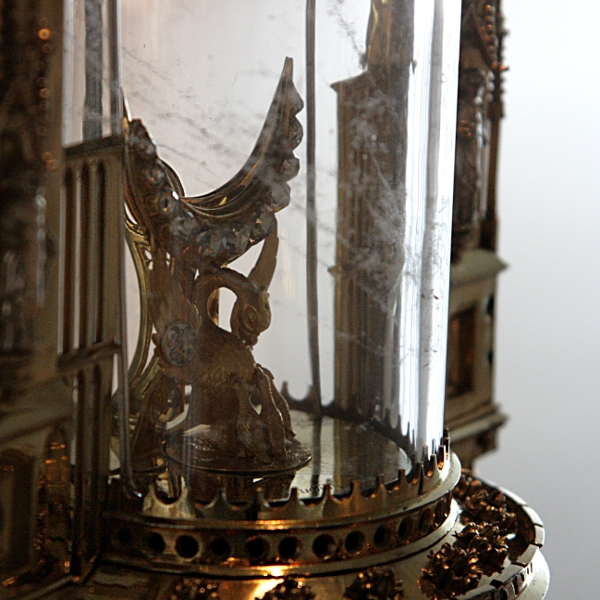
|
"Harald
Naegeli managed for years and with uncomparable rigidity, consequence
and inconsiderateness to shatter the Zurich inhabitants and their faith
in the inviolability of property as founded in our legal system."
This said in the 1980ies to enforce the 9
month sentence for Naegeli at court marks just one level of the
multiple work of "Der Sprayer von Zürich". An intense study of his
graffiti will investigate his wall drawings and will keep me busy for the next months.
|
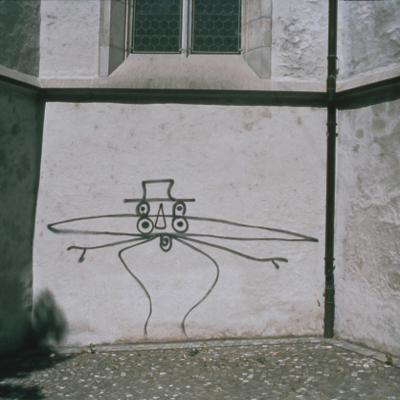
|
In
the course of livetime you happen to meet things several times, watch
some of your interests coming back or get clearer views of
correlations. During the end of my studies I was much occupied with the
architecture in the time of reconstruction after WW II. Now preparing a
lesson for architects offers me to give this interesting era another close look. Some keypoints are religious concerns, society-constructing forms and the mixture with art traditions.
|
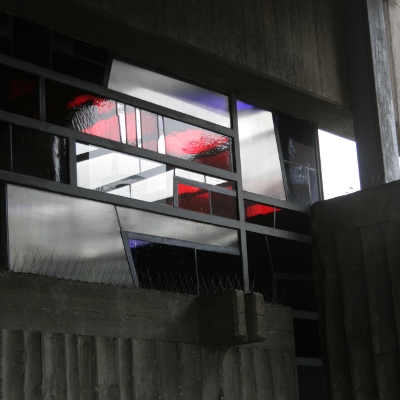
|
| Now it is already over: the Seminar on Public art and how to promote it given by Dagmar Schmidt
(who made the foto) and me at Halle University. During this we provisorically cleaned the
mirroring ground plate of Klaus-Friedrich
Messerschmidts work "Reflexion Geschichte" (1989/2000) at the
regulatory authority in Halle-Neustadt. Thus we were able to see his
artistic revision of his sculpture formerly standing on solid ground.
And we managed to meet the "Blaues Wunder" of Düsseldorf artist Andrea Knobloch intervening in Kunstraum Kiosk hr.fleischer. |

|
You
wake up in the morning and don't know where you are. Or
in the night - and this is not the place that used to be. But somehow
it is looking similar: have I been here before or just dreamed I was?
People who used to live regularly at two sites might know the feeling,
whether they have defined strict borders between a place to live and
a place to work or whether they have felt like being home at the two
different places. Suspicion there might be much more to discover leads
me to a contribution to "Doppelleben ... Sein an zwei Orten",
a project that Dieter Hofmann is occupied with since some time at Burg
Giebichenstein. I am curious: in the end this should lead to
well-designed new objects.
|
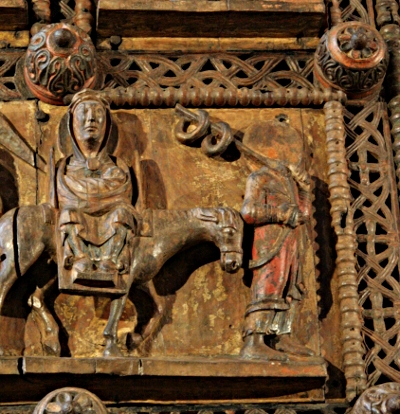 |
| How do we find public art? is the key item of a teaching project which Dagmar Schmidt and I will have in Wintersemester 2012/13 at Institut für Kunstgeschichte und Archäologien Europas of the Halle - Wittenberg University. We can count on the experience we made during our curatorial grant in summer. |
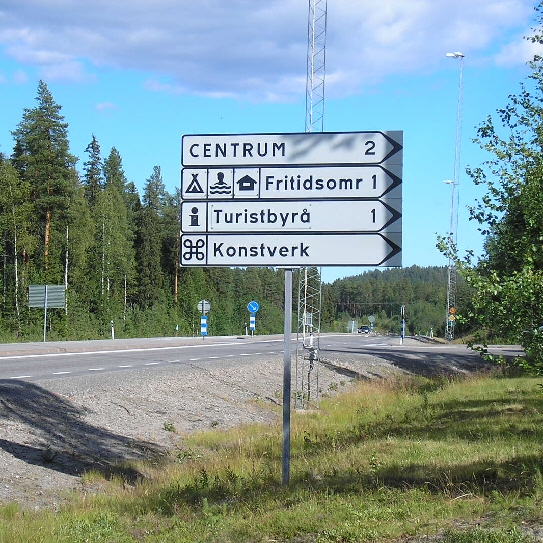 |
| I
cannot help it: I am fascinated by cars as a cultural phemonenon though
I never had one for myself. It might have to do with the fact that some
of the first words I was able to pronounce were car companies. The
multiple slogans of many years have remained in my ears, too. The
elegant remarks Roland Barthes (Mythologies, 1957; deutsch Mythen
des Alltags, Frankfurt am Main 1964) opened my eyes to some hidden
cultural levels of these vehicles, f.e. the "déesse" (goddess), which
was really new as Citroen DS. During the 1960ies as a child I was much
occupied constructing this car with my Lego toys. |
 |
Could things create love affairs if they were able to look around in space? "space affairs", the exhibition of artist, architect and poet Marc Mer opens this question. In Wien he has chosen from the MUSA collection some
crucials art works and positioned them in the exhibition hall. My text
for the catalogue for it focusses on the relation of spectator and
things toward spaces today.
|
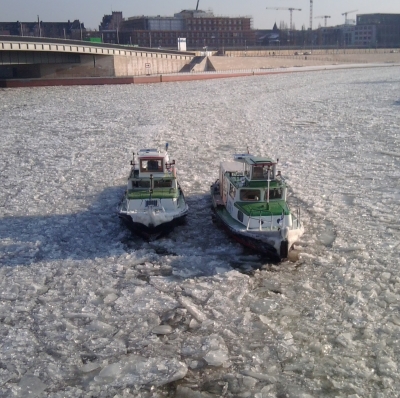 |
| Seems like 2012 will be a time to focus a lot more on curatorial questions. Kunststiftung Sachsen-Anhalt awarded me a grant (together with Dagmar Schmidt). Here are some hints to basic thought. Special events are programmed: a public sculpture walk focussing on questions of promotional shares in the artwork. Or a talk about "Skulptur Gewächshaus", an art work by Johanna Bartl,
Wieland Krause and Olaf Wegewitz that was mentioned before. |
 |
It exists since 1987: Kunsthaus Rhenania
- situated in the middle of the booming Cologne Rheinauhafen quarter.
this forner Speicherhaus (built in 1926) offers working space for
visual artists, musicians and theatre people and have a sepcial place
for cultural events. My project "Rhenania
in[tro]spektion"
puts up an exhibition which could mark the start of a series. The
Kunsthaus is focussing on public effect and exchange with other art
scenes elsewhere. Because of this the regards go to the own
infrastructure.
|
 |
As
a professional field it is as interesting as traditional: the
interchange between religion, art and promotional questions. one o my
activities since 2011 are exhibition talks in Kolumba Art museum of the
Archdiocese of Cologne. This massive and sophisticated
building ba Peter Zumthor, the multilevel situation in the centre of
cologne and the convincing collection of this house enrich these talks
with a widespread range of different visitor groups. |
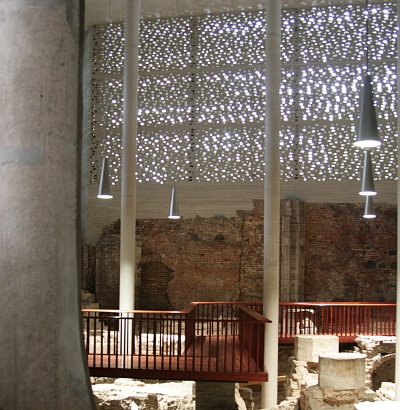 |
| The Cologne Street Art Festival CityLeaks
saw me engaged: I find an impulse for working at facades of the
Inner City an the Ehrenfeld quarter is remarkable, as is the fact that
artists were free in chosing their actions. I specially liked the
mixture between alternative locations such as Kolbfabrik (here I
was involved in "Archive Flickering"), the basic discussion of such
activities
("Cityleaks Symposium") and the slippery floor of official points of
view. Ending a series of pictures on typical quarter-items, the
sophisticated contribution by L.E.T.
now forms the wall's accent in front of Bürgerzentrum Ehrenfeld. "I
will never say what You want to hear" is to be read: a laconic remark
on tensions between consensual culture and juvenile rebellious
consciousness. |
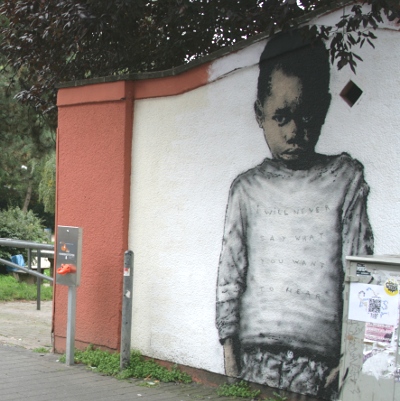 |
My
last visit to dutch Heerlen saw a confrontation of two fields
of art promotion facing each other with extended animosity.
A campaing for the newly-installed public art loan scheme attacked
the existing public sculpture. With tusks, it seems.
So I took some situational fotos of this clash of cultures and tried to adept to this Heerlen Invasion by a text (here as a pdf-file, german, with a possibility that a dutch version will follow). |
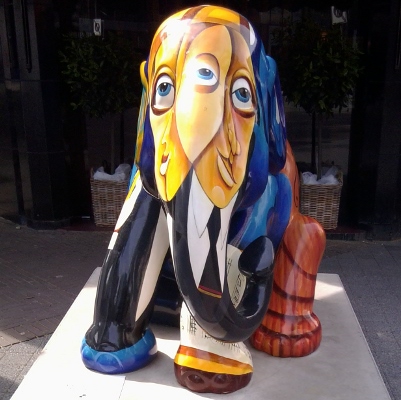
|
For Klub7
I wrote a text which will give an introduction to an overview of works
this interestng artists group has done. This will come out in the
publication series Design / Designer by Paris-based Pyramyd Editions. As the printed version appears in french and english look here for the german text.
jan 2011
|
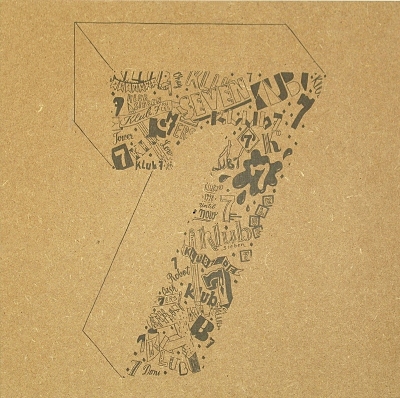
|
Suitcases normally are few inspiring useful things which usually hide their content. Who goes deeper or reads Hans Christian Andersens special fairy tale
will recognize that these containers mean mor than they are supposed to
mean. As a gift when leaving Halle I got a suitcase full of art -
which resulted in some considerations I wrote on the item.
Some (more systematical) text about art suitcases as a pedagogical means is now planned for 2011.
dec 2010
|
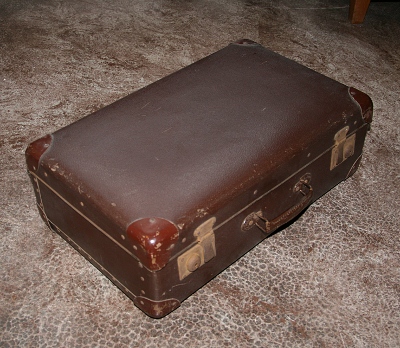
|
| At
the Art Fair I ran into someone who stated: I don't hear anything about
You now. Do I receive Your newsletter? Shortly after that, the same
ting happened again. Since now I don't know whether I should take this
serious. Did the habits of bilateral informations alter in a way that
now I behave like not normal and not communicative? To be honest: I
like to receive individual letters, post cards, e-mails or calls. Mass
mails I appreciate less. In relations to social networks I have quite
some restrictions. Therefore I have been reluctant to accept
invitations to be their part. Here are some reasons (sorry, just in german language). |
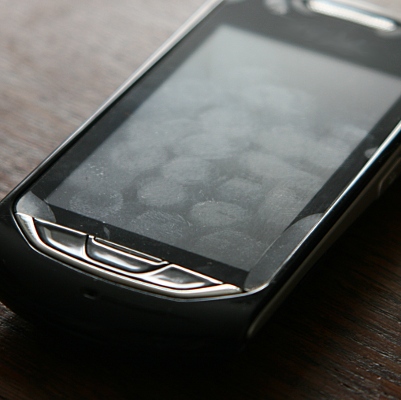
|
It
is as interesting as traditional: the relational field between between
church, art and promotional questions. One of my future activities from 2011 on will be museum talks in Kolumba
which is the art museum of the
Archdiocese of Cologne.
The massive and at the
same time filigrane building by the swiss acrhitect Peter Zumthor, the
multi-level situation of this location in the centre of cologne and
last not least the convincing collection of this museum make the talks
to an challenging demand.Facing now the second of the annual exhibition
changes, I am occupied with the new focus and title - which is
"thinking".
|

|
Lecture at the International Conference "Straßen. Von der Frühgeschichte bis in die Moderne. Verkehrsweg - Kulturträger - Lebensraum"
("Roads From early history to modern transport route - Bearers of
culture - living space," Thomas Morus Akademie Bensberg 7.-10.2.2011.
Already
quite a while ago the term "street art" joined two spheres which
otherwise are not necessarily related to each other. In addition to the
art phenomenon which
today has a streamline way to gain attention my contribution asks for
those conditions, which road gives to art. On this basis, a further
focus will open the discoures towards general cultural history.
oct 2010
|
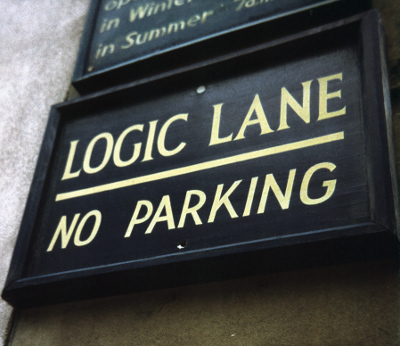
|
Paper presented at the Reichenau Artist Days 2010, Island of Reichenau, 10.-10.12.2010. General theme of the meeting: Image - representation.
This
year's Cultural Days of Reichenau confronts ecclesiastical and artistic ways of
thinking and theories of the picture. Objects here are the history of
the exegesis of the holy bible, the Church's current criteria, philosophical
and art-theoretical aspects.
My presentation: changing perspectives. Art and Church in interaction. Contact
|
 |
International
Conference on "Color in Education" at Burg Giebichenstein Halle,
29-31.10.2010, with more than 70 participating speakers and workshops,
coming from many areas of education, as well as representatives in
education policy and a major thematic exhibition.
My presentation is: street soccer players of color. About some constant factors of the (self-) education in street art.
Conference Programm
|
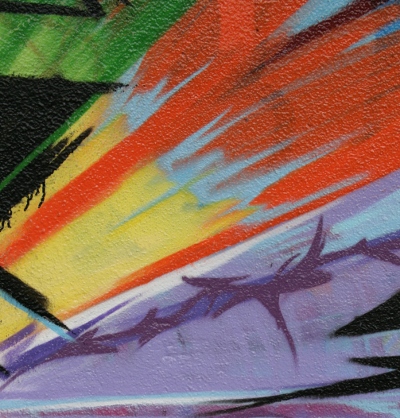
|
"VOOR NIKS" is
about artistic giveaways, how easy You can get them, what they are
heading for and what use You can really have with them. Starting from Burg Giebichenstein the Halle University of Art and Design, the exhibition takes place in kus, a small Dutch Art Association of Heerlen. Unlike
the more historically-based precursor, the exhibition "Giveaways" (2002), a range of exciting artists from Halle, Heerlen and
Maastricht are actively involved. In the development of the project, the show goes to Halle, in the impressive kiosk of the art initiative "hr.fleischer".
Introduction (D)
Further Information (NL/D) and Images
kuS (Kunstencentrum Signe), Heerlen (NL)
"hr.fleischer" Kiosk am Reileck, Halle / Saale (D)
| 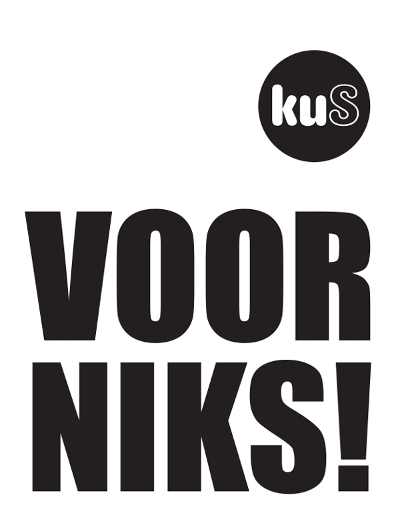
|
Vormals
an anderer Stelle bereits abgebildet, möchte ich hier noch einmal
gesondert auf ein Kunstwerk im öffentlichen Raum hinweisen, das mir
sehr am Herzen liegt und das zur Zeit durch Zerstörung bedroht ist. Es
Handelt sich um die "Skulptur Gewächshaus" der Künstler Johanna Bartl,
Wieland Krause und Olaf Wegewitz. Seit einigen Jahrenwächst in ihrem
Inneren - so das Konzept der Künstler - die Natur unbehelligt
weiter. Diese überzeugend im Bereich des alten Klostergartens in
Magdeburg platzierte und "angewachsene" Arbeit möchte der OB der Stadt,
Dr. Lutz Trümper, nun aus der Innenstadt und vom Elbufer weghaben.
Dabei scheint er weder wahrhaben zu wollen, dass der Standort Teil der
Arbeit ist noch dass gerade der prozessuale Anteil richtungsweisend die
älteren Arbeiten im Bereich des Kunstmuseums Kloster Unser lieben
Frauen bereichert. Dass das zudem ein Geschenk des Landes an die Stadt
war, macht die Sache nicht einfacher.
|
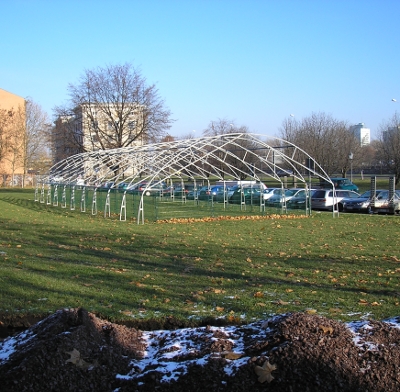
|
Ending
my work in Halle has some sentimental taste, but most of all, the
impression remains to have done useful work, having given positive
impacts, and being there in the right place. Both personally and
institutionally a whole series of contacts continue and some projects
arose. It is still an open question to what extent this will have lasting effects on my new plans.
|
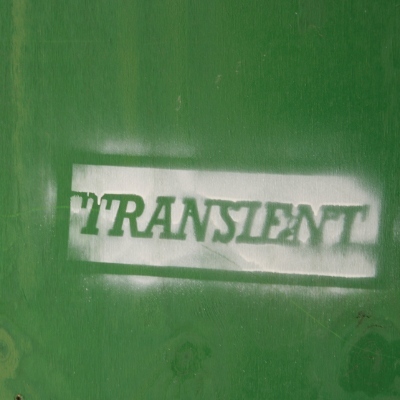 |
|
Having
been occupied with papers on Art in public realm and
architecture-related art, it was time to make this an item in seminars.
Connecting this teaching forum with everyday reality I expect impulses
for both sides, specially as this item is in focus for a number of
institutions, who want to locate this theme more often in public
discussions ans in teaching.
|
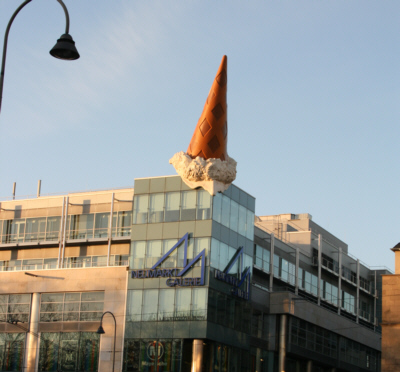
|
>An old flame does not die<, they say. After my intensive occupation with graffiti and other signs at the walls during my doctoral thesis this interest weakened a bid in my professional life. Since then a lot has happened. More than 25 years later I started again. The result is a wide-spread book about street art and graffiti which bundles
recent trends and older results. It is not only the artistic awakeness
for the public walls which matters here, but also all those questions
of mediation which have gained more and more importance for an information society.
Here are some hints by my publisher Ullmann-Publishing. |
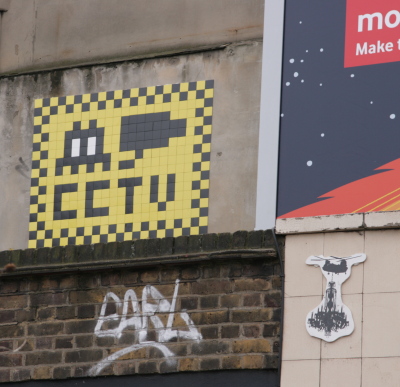 |
|
Die
Kunstgeschichte als lebender und sich entwickelnder Organismus von
Bildern, Gedanken, gelebten Gefühlen und gesellschaftlichen
Verhältnissen: Das ist ein grundlegend wichtiges Arbeitsfeld für
Ausbildung, vermittelnde Praxis und beratender Tätigkeit. Und
offensichtlich gilt das für so unterschiedliche Bereiche wie die
künstlerische Selbstdarstellung und seine Fremdwahrnehmung, für
Fragen der Wand oder für Methoden und Triebfedern gesellschaftlicher
Arbeit.
Seminare hierzu:
Annäherung an die Kunstgeschichte
Umbrüche, Umstürze, Umbauten
Wiki-Kunstgeschichte
|
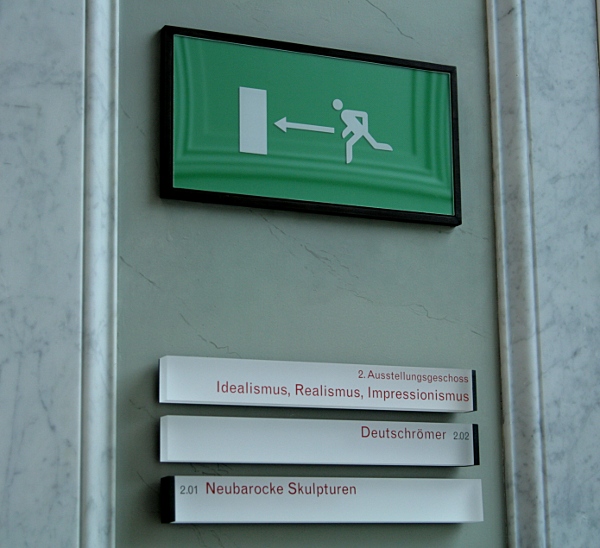
|
|
My projected book "Der
interaktive Blick" is finished and will soon be available as an e-Book.
|
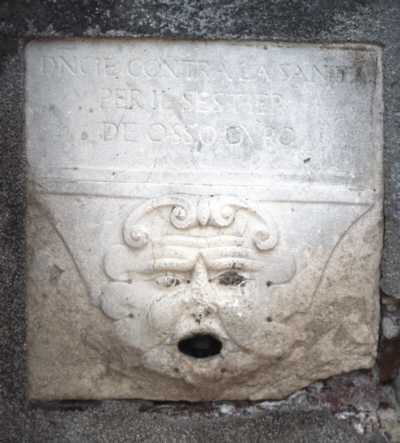
|
|
Er liegt noch immer
nur passagenweise vor: mein Beitrag zum aktuellen Kunsterklärhype.
Der Titel steht jedoch schon ziemlich fest:
Wie erkenne ich schlechte Kunst?
|
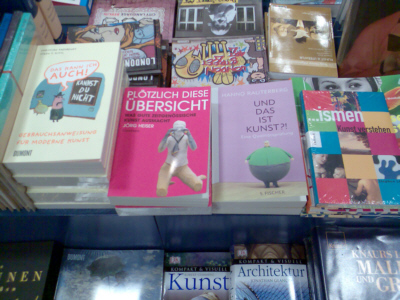
|
|
Zur Ausstellung "Skulptur
Projekte Münster 2007" ist ein Kinderführer (9.80 €)
zu haben, für den ich die Texte verfasst und spannenderweise mit
den Illustratoren Christoph Mett
und Philipp
Seefeldt zusammenarbeit habe.
Näheres unter:
http://www.skulptur-projekte.de/information/publikationen/
oder
http://www.coppenrath.de/anzeigen_aktuelles.php?
id=123&table=aktuelles&n0=aktuelles&n1=news
|
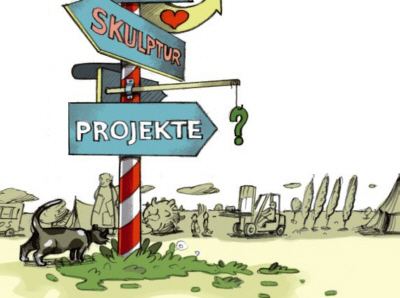 |
|
Wirtschaft
als Kunstfaktor: ein Salon.
Als Einstieg in die Arbeit an der Hochschule für Kunst und
Design Burg Giebichenstein Halle 2007 begonnen, hat sich das Thema weiterentwickelt.
Am 15.4.2010 ging es im ungewöhnlichen abendlichen Veranstaltungsformat des Kölner Salons um die Wechselperspektiven zwischen Wirtschaft und Kunst.
|
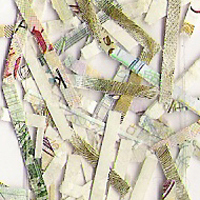  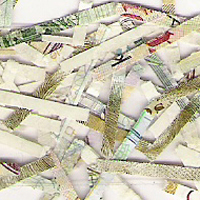 
|
| Der Nachhaltigkeitsaspekt
interessiert mich auch für das freie Projekt "10 years after.
Zu präh- und postaktuellen Situationen". Hier geht es um den Zeitabstand,
der einen klareren Blick ermöglicht, historisch oder prophetisch. Und
nicht zuletzt um all das, was durch den Aktualitätskult möglicherweise
allzu rasch wieder aus der Optik verdrängt wird. |
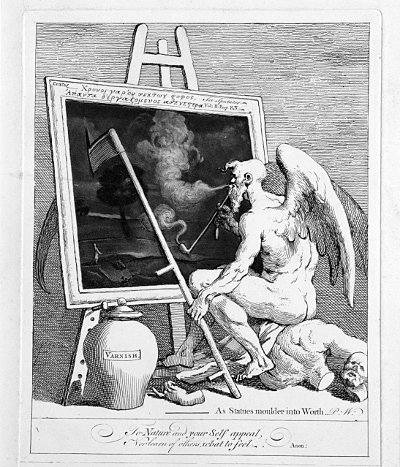
|



































































































